Vol. 71, No. 4 (2022)
2022-02-20
REVIEW

COVER ARTICLE
2022, 71 (4): 048502.
doi: 10.7498/aps.71.20212033
Abstract +
Two-dimensional van der Waals materials (2D materials for short) have developed into a novel material family that has attracted much attention, and thus the integration, performance and application of 2D van der Waals heterostructures has been one of the research hotspots in the field of condensed matter physics and materials science. The 2D van der Waals heterostructures provide a flexible and extensive platform for exploring diverse physical effects and novel physical phenomena, as well as for constructing novel spintronic devices. In this topical review article, starting with the transfer technology of 2D materials, we will introduce the construction, performance and application of 2D van der Waals heterostructures. Firstly, the preparation technology of 2D van der Waals heterostructures in detail will be presented according to the two classifications of wet transfer and dry transfer, including general equipment for transfer technology, the detailed steps of widely used transfer methods, a three-dimensional manipulating method for 2D materials, and hetero-interface cleaning methods. Then, we will introduce the performance and application of 2D van der Waals heterostructures, with a focus on 2D magnetic van der Waals heterostructures and their applications in the field of 2D van der Waals magnetic tunnel junctions and moiré superlattices. The development and optimization of 2D materials transfer technology will boost 2D van der Waals heterostructures to achieve breakthrough results in fundamental science research and practical application.
GENERAL
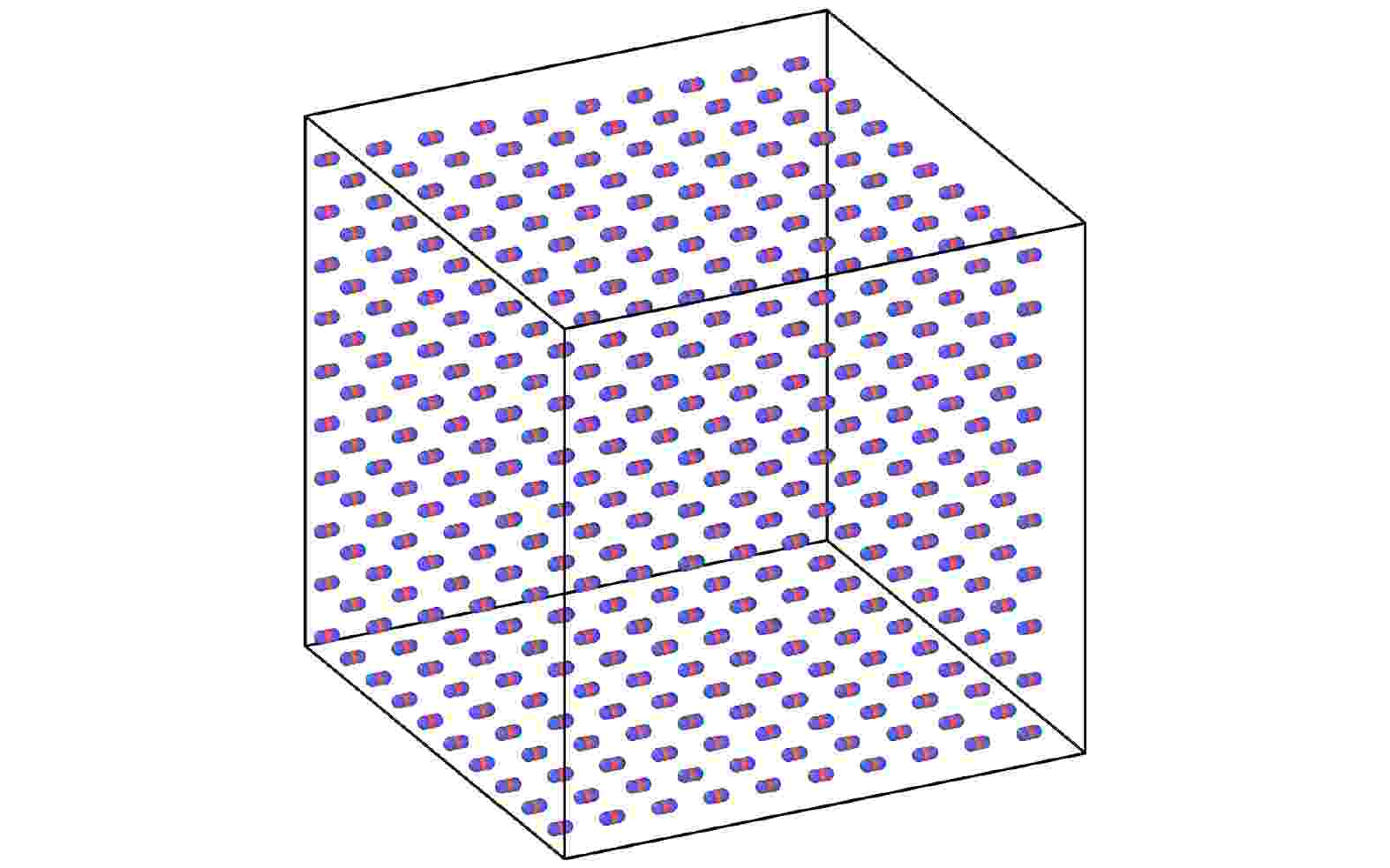
2022, 71 (4): 040201.
doi: 10.7498/aps.71.20211464
Abstract +
Supercritical carbon dioxide has gradually been becoming an important research subject in the academic field due to the fact that it has a promising application prospect in the field of extraction, precipitation, thermodynamic cycle and chemical reaction. In recent years, the interest in studying the region near the critical point was aroused and a large variation of the physical properties could be detected due to the change of temperature and pressure. The rapid development of molecular simulation technology benefits the traditional experimental methods to study the variations of relevant physical properties in the near-critical region. In order to find out the Widom line range of supercritical carbon dioxide in the near-critical region and the molecular structure characteristics of the liquid-like gas region, both the molecular dynamics simulation technology and the cluster analysis are used to investigate the relation between variation coefficient and skewness of CO2 density time series with Widom line and liquid-gas-like interval, under the condition of the temperature and pressure range of 300–350 K and 5.5–18.5 MPa, respectively. The results show that the Widom line of supercritical carbon dioxide in the near-critical region can be determined by connecting the maximum coefficient of variation of the density time series curve. The Widom line begins to extend along with the critical point until it stops at 350 K. The molecular distribution structure of supercritical carbon dioxide liquid-like region and gas-like region can be differentiated by the skewness of the number density distributions. The skewness is positive in the gas-like region, but negative in the liquid-like region, and reaches the maximum at the Widom line.

EDITOR'S SUGGESTION
2022, 71 (4): 040501.
doi: 10.7498/aps.71.20211607
Abstract +
As their characteristic dimensions are reduced to the nanoscale regime, such as single layer and single atom, the materials exhibit novel physical and chemical properties. Both the two-dimensional materials and the ordered array of single atoms or molecules have become cutting-edge research topics in the area of modern quantum devices and catalytic science. Silicene prepared on the Ag(111) substrate exhibits abundant superstructures at different substrate temperatures and coverages. These superstructures can be reliable templates for fabricating the ordered array of single atoms or molecules. Using in-situ silicene preparation, molecular deposition, ultra-high vacuum scanning tunneling microscope (STM), and scanning tunneling spectroscopy (STS), the electronic structures, surface work functions and adsorption behaviors of CoPc molecules on three silicene superstructures ((4 × 4), ($\sqrt {13} \times \sqrt {13} $ ), and ($2\sqrt 3 \times 2\sqrt 3 $ )) are studied. Firstly, the three silicene superstructures have similar electronic structures according to the characterization from the dI/dV curve at 77 K. The electronic structure varies on an atomic scale. With the disordering increasing, the full width at half maximum of the +0.6 V states broadens from (4 × 4) to ($\sqrt {13} \times \sqrt {13} $ ) to ($2\sqrt 3 \times 2\sqrt 3 $ ). Secondly, the average surface work functions of the three superstructures of silicene also vary on an atomic scale and are all higher than those on the Silver surface. So, electrons are probably transferred from the Ag substrate to the single-layer silicene. The number of the transferred electrons increases from (4 × 4) structure, ($\sqrt {13} \times \sqrt {13} $ ) structure, to ($2\sqrt 3 \times 2\sqrt 3 $ ) structure. Thirdly, the change of the surface work function on an atomic scale plays an important role in selectively adsorbing the CoPc molecules, which causes the symmetry of CoPc electronic structure to break. It indicates that none of the three silicene superstructures belongs to a complete π-bond system. Especially, on the (4 × 4) superstructure, all CoPc molecules are divided into two halves. One half is similar to the free standing ones, in which there are HOMO (–0.45 V) and LUMO (+0.7 V) state. The other half has strong interaction with the silicene. The HOMO state is suppressed and there is a hybrid state at 1.0 V according to the dI/dV characterization.

2022, 71 (4): 040701.
doi: 10.7498/aps.71.20211421
Abstract +
Light field camera can solve the problems of complex optical path and difficult synchronous trigger of radiation temperature measurement multi camera system, which has some unique advantages in three-dimensional temperature reconstruction of radiation imaging. The LSQR is a classical algorithm for solving the least square problem based on large sparse matrix. When the algorithm is used to reconstruct three-dimensional temperature field, it depends on the initial value of temperature, and the reconstruction accuracy is not ideal when the signal-to-noise ratio is low. In this paper, a damped LSQR-LMBC reconstruction algorithm is proposed. By adding a damped regularization term into the LSQR method, the anti noise performance of flame three-dimensional temperature field reconstruction is improved. By combining the LMBC algorithm, the absorption coefficient and three-dimensional temperature field are solved at the same time. In the numerical simulation part, with the gradual reduction of signal-to-noise ratio, the reconstruction effect of Damped LSQR turns more stable than LSQR. When the signal-to-noise ratio reaches 13.86 dB, the reconstruction accuracy is improved by about 30%. The average reconstruction error of damped LSQR-LMBC is 6.63%. The three-dimensional temperature field distribution of butane flame is consistent with the characteristic of radiation flame combustion. Compared with the temperature measurement data of thermocouple, the relative error is about 6.8%.
NUCLEAR PHYSICS
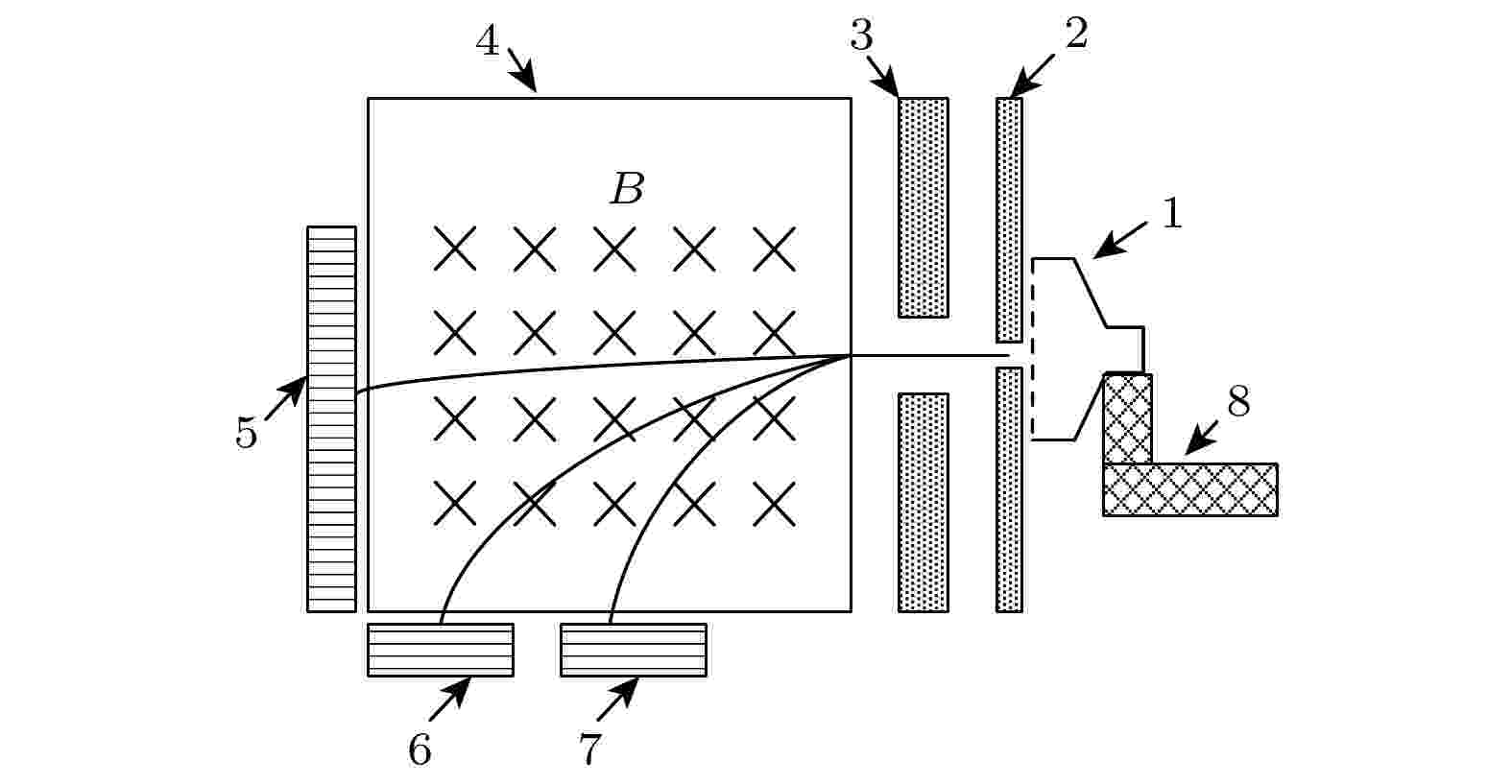
EDITOR'S SUGGESTION
2022, 71 (4): 042901.
doi: 10.7498/aps.71.20211835
Abstract +
There are many kinds of ions in vacuum arc discharge plasma, which have different distributions in space. In this paper, a compact magnetic analyzer is developed for studying the spatial distribution of deuterium ions and metal ions in vacuum arc discharge with occluded deuterium electrode. When the arc current is about 100 A, the device can effectively transfer the ion beam with good secondary electron suppression, and can accurately obtain the ion current intensity. The spatial distribution of deuterium ions and titanium ions in the vacuum arc discharge with TiD electrode are measured by this device. The results show that both deuterium ions and Titanium ions are Gaussian distribution in the radial direction, but deuterium ions are evenly distributed, while titanium ions are relatively concentrated near the axis, resulting in the lowest proportion of deuterium ions near the axis. Along the axis, the number of all ions decreases as a natural exponential function, and the relative magnitudes are approximately equal, so the proportion of deuterium ions is almost constant. The results of this study not only help to understand the plasma expansion process of vacuum arc discharge, but also guide the design of vacuum arc ion source with occluded deuterium electrode and its ion extraction.
ATOMIC AND MOLECULAR PHYSICS
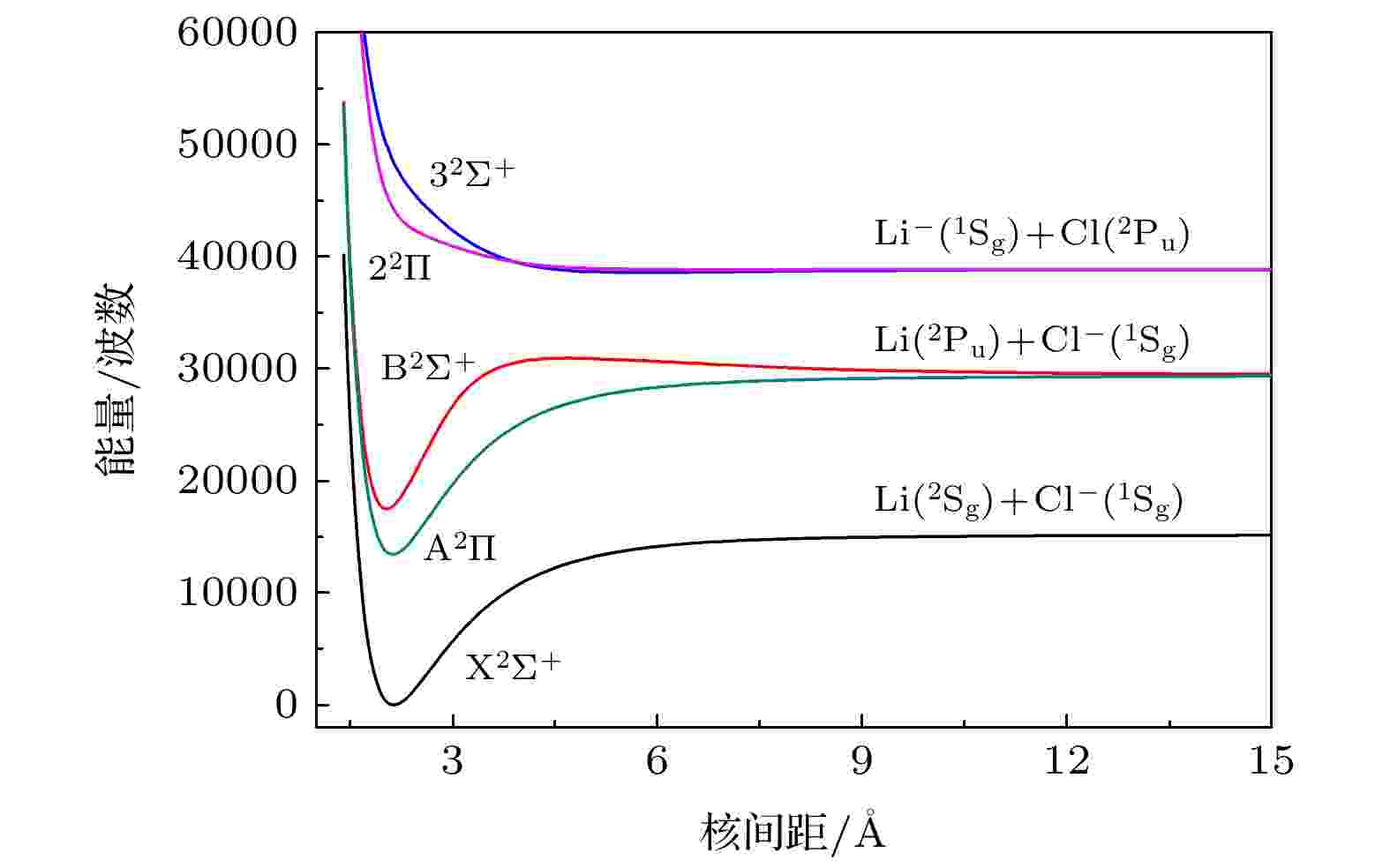
2022, 71 (4): 043101.
doi: 10.7498/aps.71.20211688
Abstract +

2022, 71 (4): 043102.
doi: 10.7498/aps.71.20211565
Abstract +
The swelling of Ca-montmorillonite at elevated temperatures is important for many applications including geological disposal of radioactive waste, subsurface carbon sequestration, and shale gas exploration. However, the experimentally observed swelling behaviors of Ca-montmorillonite contacting liquid water and the temperature effects on the swelling pressure are not well understood. In this work, molecular dynamics simulations are carried out to study the swelling of Wyoming Ca-montmorillonite with a d-spacing (d) range of 1.40–4.00 nm at 5 MPa and various temperatures (298–500 K). The ClayFF and SPC are adopted for modeling Ca-montmorillonite and water, respectively. The simulation box is measured to be 11.15, 3.66, and 28.00 nm in the x-, y-, and z-direction. Atomistic pistons are used to control the bulk pressure of the water environment, and the implicit walls are implemented for preventing the ions from leaking from the pore into the water environment. The clay atoms are fixed during the simulation and the swelling pressure is calculated through dividing the force by the area. The equilibrium time is at least 20 ns and the production time falls in a range of 50–88 ns. The swelling pressure results show that for small d, high temperature reduces the magnitude of the oscillating curve of swelling pressure and also reduces the range of d where hydration force dominates the swelling pressure. This temperature effect is due to the weakened hydration force as evidenced from the weakened water density distributions inside the pore. For large d, high temperature reduces the swelling pressure, which is consistent with the experimental result, and increases the range of d where double layer force dominates the swelling pressure. The reduction of the swelling pressure can be explained by the enhanced ion correlation that reduces the double layer force according to the strong coupling theory, given that the calculated coupling parameters at higher temperatures are smaller. The swelling pressures are negative at elevated temperatures and large d, which prevents the clay from further swelling. However, the classical Poisson-Boltzmann (PB) equation predicts the positive double layer force since the ion correlation effect is not considered in the PB equation. Furthermore, the calculated swelling free energy curve shows that at 298 K and 5 MPa, it is difficult for Ca-montmorillonite to swell beyond a d-spacing of around 1.9 nm, which is in good agreement with the experimental result. The energy barrier for Ca-montmorillonite to swell to large d is larger than that for Na-montmorillonite, which means that it is more difficult for Ca-montmorillonite to swell to large d. This behavior is consistent with experimental observation and can be explained by the larger ion correlation effect in the Ca-montmorillonite system. These findings enhance the understanding of swelling of Ca-montmorillonite at elevated temperatures and could help to engineer better barrier materials for nuclear waste storage.
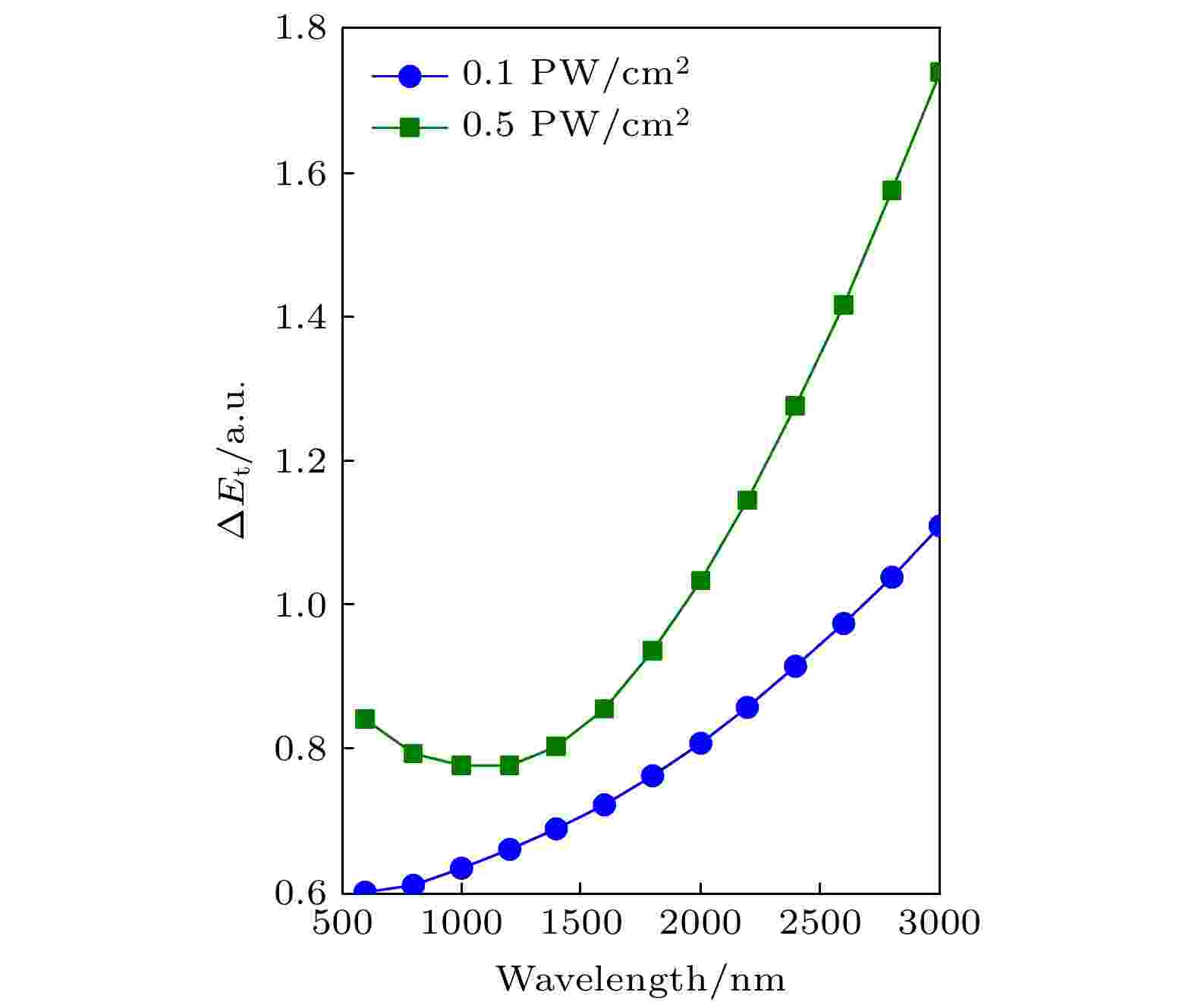
2022, 71 (4): 043201.
doi: 10.7498/aps.71.20211703
Abstract +
Using the three-dimensional classical ensemble model, we investigate the dependence of the energy absorbed by two electrons (Ar atom as an example) from the laser field on the laser parameters (wavelength, laser intensity and ellipticity). The results show that when the laser intensity is fixed and the wavelength increases, the energy absorbed by the two electrons from the laser field increases as a whole, but the trend is slightly different under different intensities. At lower intensity the dependence of the energy absorbed by the two electrons from the laser field on wavelength increases steadily and at higher intensity it decreases slowly and then increases rapidly. The intensity dependence of the energy absorbed by two electrons from the laser field in the whole ensemble presents two interesting intersections at different wavelengths. The dependence of the energy absorbed by the two electrons from the laser field on the ellipticity first decreases and then increases slowly at lower intensity; it has a “Ladder shape” that slowly increases and then decreases and finally slowly increases at moderate intensity; it shows a trend of increasing first and then decreasing at higher intensities. In order to explain the dependence of the energy absorbed by two electrons from the laser field on the laser parameters (wavelength, laser intensity and ellipticity), the kinetic process of the whole ensemble is divided into four channels: double ionization, single ionization, frustrated single ionization and frustrated double ionization. The characteristics of each channel and how it dominates the overall trend of energy absorption from the laser field by the two electrons are then analyzed. The analysis results show that the dependence of the energy absorbed by the two electrons from the laser field on wavelength、laser intensity and ellipticity is due to the fact that some channels dominate the energy absorbed by the two electrons from the laser field.

EDITOR'S SUGGESTION
2022, 71 (4): 043202.
doi: 10.7498/aps.71.20211458
Abstract +
In this work, we present an nS1/2→(n + 1)S1/2 two-photon excitation EIT-AT spectrum of Rydberg atom in the vapor cell. A ground state (6S1/2), a first excited state (6P3/2) and Rydberg state (69S1/2) of cesium atoms constitute a three-level system. A weak probe laser locking to the transition of 6S1/2 (F = 4)→6P3/2 (F′ = 5) couples the ground-state transition, and the strong coupling laser drives the Rydberg transition of 6P3/2→69S1/2 to yield electromagnetically induced transparency (EIT) effect, which realizes the optical detection of Rydberg atoms. Two Rydberg 69S1/2 and 70S1/2 levels are coupled with the microwave field at a frequency of fMW = 11.735 GHz, forming a microwave two-photon spectrum. To observe the influence of microwave electric field power on two-photon spectrum, we investigate the microwave coupled Rydberg EIT-AT spectra at different microwave fields. The measurements show that the EIT-AT splitting interval is proportional to the square of the microwave electric field at strong microwave field, and indicvates a nonlinear dependence at weak microwave electric field. The theoretical calculation accords with the experimental measurement. The work here is of significance in precisely measuring the microwave electric field.
ELECTROMAGNETISM, OPTICS, ACOUSTICS, HEAT TRANSFER, CLASSICAL MECHANICS, AND FLUID DYNAMICS
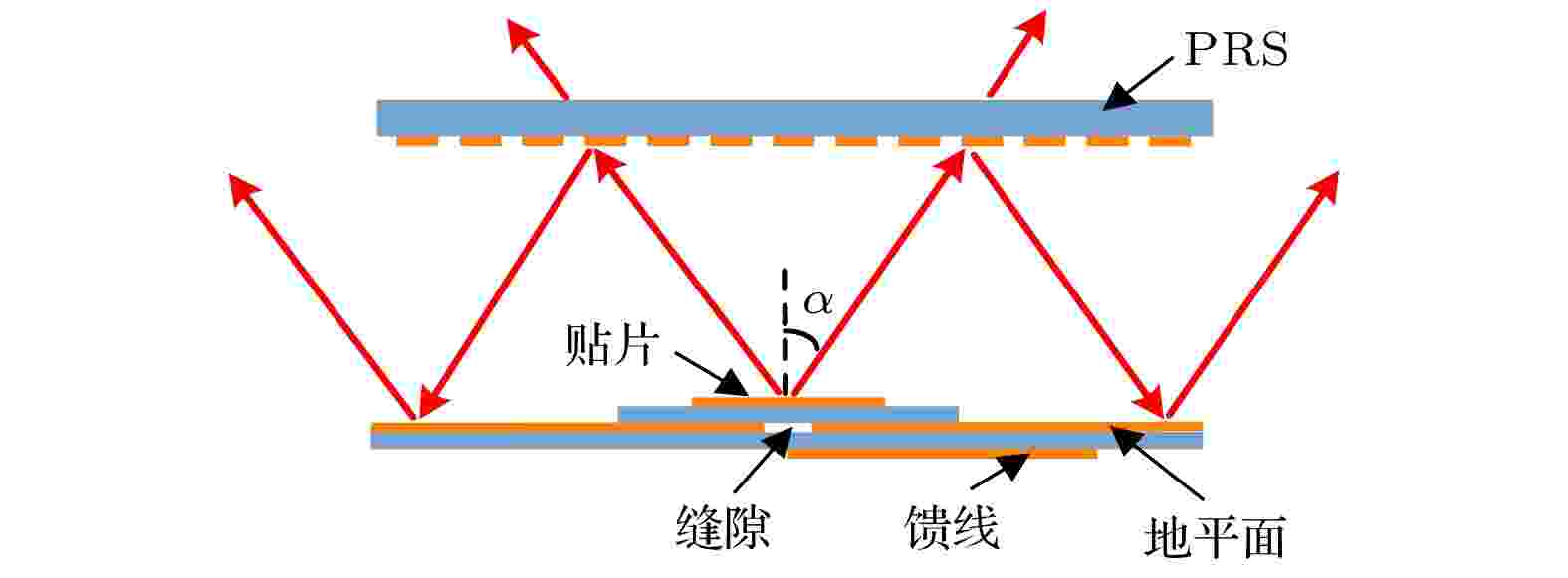
2022, 71 (4): 044101.
doi: 10.7498/aps.71.20211914
Abstract +
Based on the ray-tracing model, a new method of achieving a high gain and high aperture efficiency Fabry-Perot antenna with metamaterial-based corner reflector is proposed. The proposed Fabry-Perot antenna is composed of a dual circularly polarized patch antenna feed and the metamaterial-based corner reflector. The metamaterial-based corner reflector consists of four phase correction metasurfaces and a partially reflective surface. First, theory and analysis of the Fabry-Perot antenna with metamaterial-based corner reflector are presented. Then, the performances of the dual circularly polarized antenna feed, the traditional Fabry-Perot antenna, and the Fabry-Perot antenna with metamaterial-based corner reflector are compared among each other and analyzed. Finally, the proposed Fabry-Perot antenna is fabricated and measured. The measured left-hand circular polarization (LHCP) gain and the measured right-hand circular polarization (RHCP) gain of the proposed Fabry-Perot antenna are 21.4 dBi and 21.3 dBi, respectively. Comparing with the antenna feed, the LHCP gain and RHCP gain of the proposed Fabry-Perot antenna are enhanced by 16.4 dB and 16.3 dB, respectively. Compared with the traditional Fabry-Perot antenna, the metamaterial-based corner reflector acts as both a reflection surface and a phase correction surface. It manipulates the propagation direction and phase of electromagnetic wave. The proposed Fabry-Perot antenna with high gain, high aperture efficiency and low sidelobe at 2.8 GHz paves the way for developing the solar radio telescope and conducting the observation.

EDITOR'S SUGGESTION
Passive near-field optical scanning imaging based on semiconductor nanowire/tapered microfiber probe
2022, 71 (4): 044201.
doi: 10.7498/aps.71.20211810
Abstract +
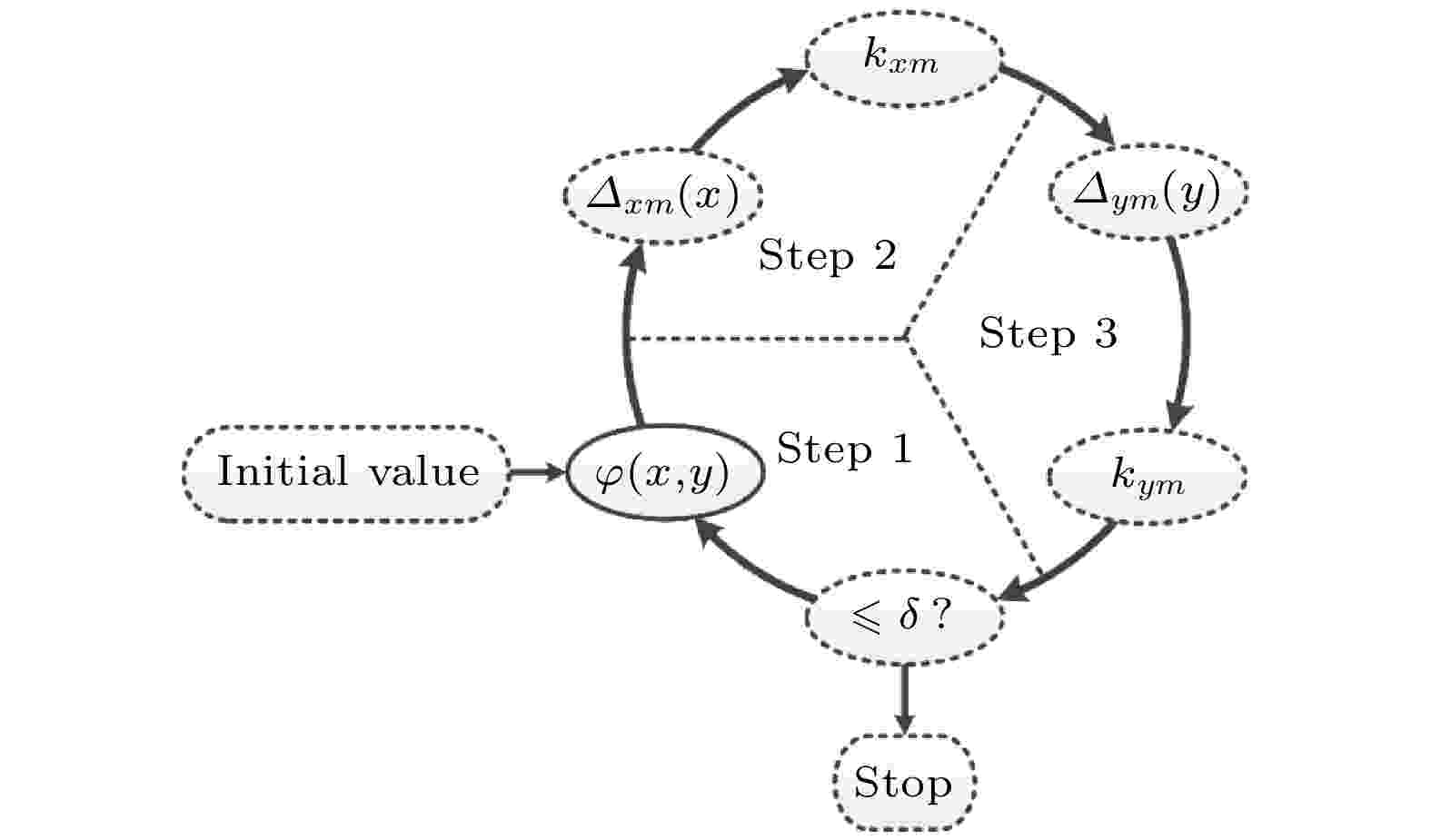
2022, 71 (4): 044202.
doi: 10.7498/aps.71.20211509
Abstract +
Benefitting from the high measurement efficiency, off-axis digital holography (DH) has become a most powerful DH technique for fast and high-accuracy measurement. Owing to the carrier frequency, the real image can be isolated easily in the Fourier spectrum of one off-axis hologram, so that the Fourier transform algorithm (FTA) is the most widely used algorithm for off-axis DH to realize the phase retrieval. In the FTA, one of the most important tasks is to figure out the accurate peak position of the real image and then shift the real image to the center of spectrum to remove the carrier. However, owing to the digitalization of the hologram, the peak position of the real spectrum is always not located at an integral pixel position in the practical applications, resulting in carrier residuals, thereby lowering the retrieval quality. Much work on accurately determining the peak position has been conducted to suppress the carrier residuals, such as by using the spectrum centroid method and zero padding. However, those estimation algorithms can achieve only satisfied accuracy in some situations. Then, spatial carrier phase shift (SCPS) is utilized to expand the utilization of space-bandwidth and avoid the spectrum leakage caused by band-pass filtering. The SCPS decomposes one off-axis hologram into several sub-holograms, in which the carrier induces the phase shifts between sub-holograms. Many on-axis phase retrieval algorithms are combined with SCPS to retrieve the phase from one off-axis hologram. However, the retrieved phase is usually composed of the sample phase and the carrier, so the accurate carrier information is also required to remove the carrier and obtain the correct reconstructed phase. In this paper, an accurate phase retrieval with carrier removal from single off-axis hologram by using the linear regression is proposed to achieve the simultaneous phase retrieval and carrier removal. In this method, four phase-shifted sub-holograms are extracted first from one off-axis hologram by SCPS. Since the phase shift between sub-holograms is linearly proportional to the carrier, the linear regression can be combined with least-square method to retrieve the phase and carrier simultaneously. Both the simulation and experimental results show that the proposed method can determine the carrier accurately and obtain correct phase without carrier. We believe that this proposed method can be applied to practical measurement.

EDITOR'S SUGGESTION
2022, 71 (4): 044203.
doi: 10.7498/aps.71.20211382
Abstract +
The non-classical light resonance on the cesium D1 (894.6 nm) line has important applications in solid-state quantum information networks due to its unique advantages. The cesium D1 line has a simplified hyperfine structure and can be used to realize a light-atom interface. In our previous work, we demonstrated 2.8-dB quadrature squeezed vacuum light at cesium D1 line in an optical parametric oscillator(OPO) with a periodically poled KTP(PPKTP) crystal. However, the squeezing level is relatively low, and the tunability that has practical significance for squeezed light has not been further investigated. Theoretically, the increase of the transmittance of output mirror and the decrease of the intra-cavity loss of the OPO can improve the squeezing level. Here, we use super-polished and optimal coating cavity mirrors to improve the nonlinear process in OPO. We prepare 447.3 nm blue light from 894.6 nm fundamental light by a second harmonic generation cavity (SHG). The SHG is a two-mirror standing-wave cavity with a PPKTP crystal as the nonlinear medium. The power of generated blue laser is 32 mW when the incident infrared power is 120 mW. Using the blue light to pump an OPO, we achieve quadrature squeezed vacuum light at cesium D1 line. The OPO is a two-mirror standing-wave cavity with a PPKTP crystal. The threshold of OPO is reduced to 28 mW. The squeezing level of generated quadrature squeezed vacuum light is increased to 3.3 dB when the pump power is 15 mW. Taking into account the overall detection efficiency, the actual squeezing reaches 5.5 dB. We inject a weak signal beam into the OPO cavity to act as an optical parametric amplifier (OPA), and test the tunability of squeezzed light. The blue light and the squeezed light are tuned by using a low-frequency triangular wave signal to scan the Ti: sapphire laser. Gradually increasing the amplitude of the scanning triangle wave signal, the generated bright squeezed light can be continuously tuned over a range around 80 MHz without losing the stability of the whole system. The generated squeezed light offers the possibility for the efficient coupling between the non-classical source and solid medium in the process of quantum interface.
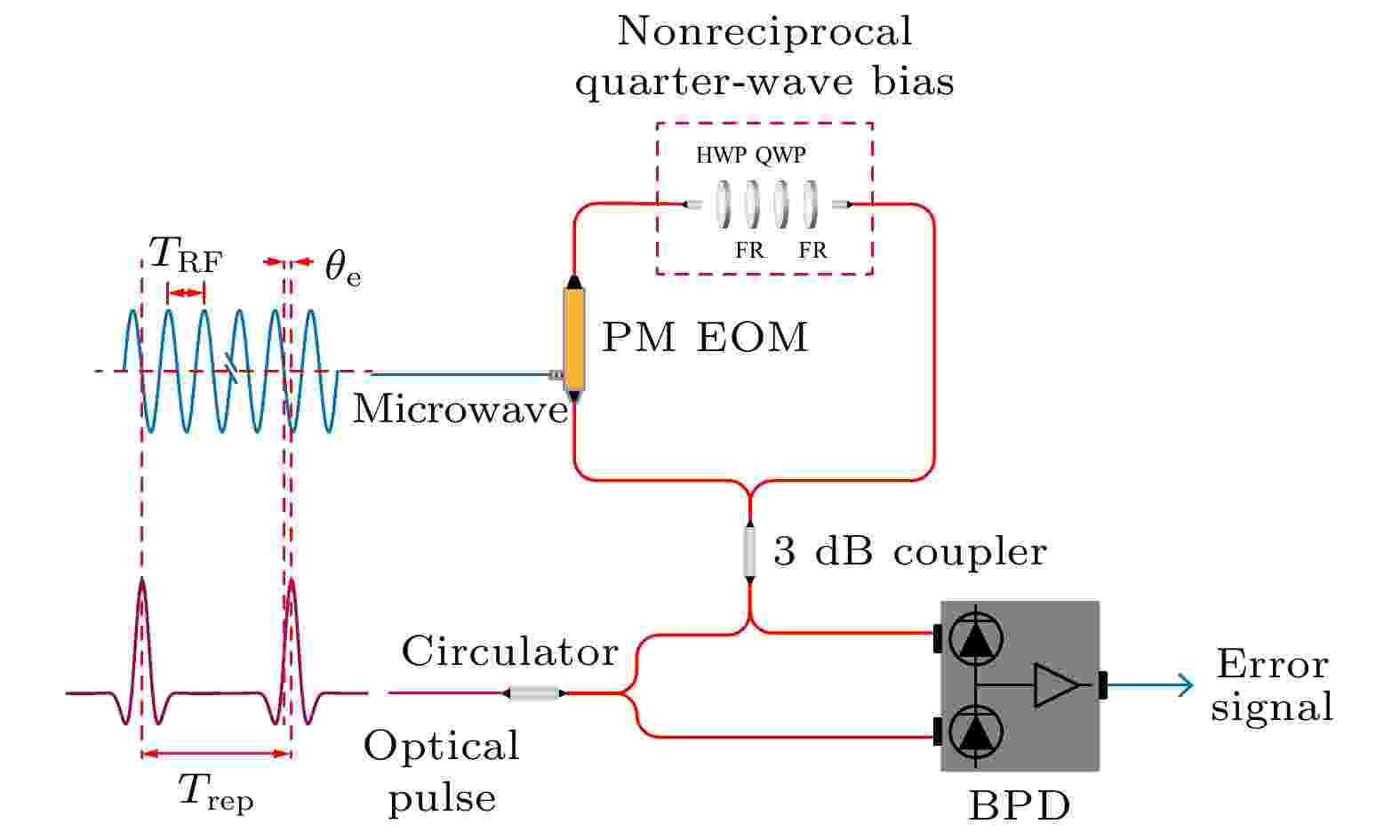
2022, 71 (4): 044204.
doi: 10.7498/aps.71.20211253
Abstract +
Low-noise microwave signals are of vital importance in fields such as cold atomic optical clocks, photon radars, and remote synchronization at large facilities. Here, we report a compact all-optical-fiber method to generate a low noise microwave signal, in which the fiber loop optical-microwave phase detector is used to coherently transfer the frequency stability of the ultra-stable laser to the microwave. Combining a narrow linewidth optical frequency comb and a fiber loop optical-microwave phase discriminator, a tight phase-lock between 7 GHz dielectric oscillator and optical frequency comb is achieved, the remaining phase noise of the synchronized optical pulse sequence and the microwave signal is –100 dBc/Hz@1 Hz, and the timing jitter is 8.6 fs (1 Hz—1.5 MHz); by building two sets of low-noise microwave generation systems, the measured residual phase noise of the 7 GHz microwave is –90 dBc/Hz@1 Hz, and the corresponding frequency stability is 4.8 × 10–15@1 s. These results provide a novel idea for generating the low-noise microwaves based on optical coherent frequency division.

EDITOR'S SUGGESTION
2022, 71 (4): 044205.
doi: 10.7498/aps.71.20211772
Abstract +
Wavelength modulation-direct absorption spectroscopy (WM-DAS) has the advantages of both direct absorption spectroscopy (DAS) measurable absorptivity function and wavelength modulation spectrum (WMS) with high signal-to-noise ratio (SNR). In this paper, the WM-DAS spectrum is used to measure the absorptivity of 4300.7 cm–1 line of CO molecule and the detection limit is as low as 4 × 10–7 (200 s) at 0.5 m optical path, room temperature and low pressure. Then, through combining the WM-DAS spectrum with a 120 m long optical path Herriott cell, at room temperature and atmospheric pressure, the standard deviation of the fitting residual error of the absorptivity function is reduced down to ~5.1 × 10–5 (1 s). Finally, different concentrations of CO are continuously monitored by long-path WM-DAS measurement system, and compared with the results obtained from the cavity ring-down spectroscopy (CRDS). The experimental results show that the measurement results from the long-path WM-DAS and CRDS method are the same. The detection limit of CO concentration in long-path WM-DAS system is as low as 0.9 ppb (200 s), and the WM-DAS system is simple and the measurement speed is much faster than CRDS. At the same time, the long-path WM-DAS system is used to continuously monitor the atmospheric trace CO concentration and trend for one month, and the measured results are highly consistent with those from the China Environmental Monitoring Station.
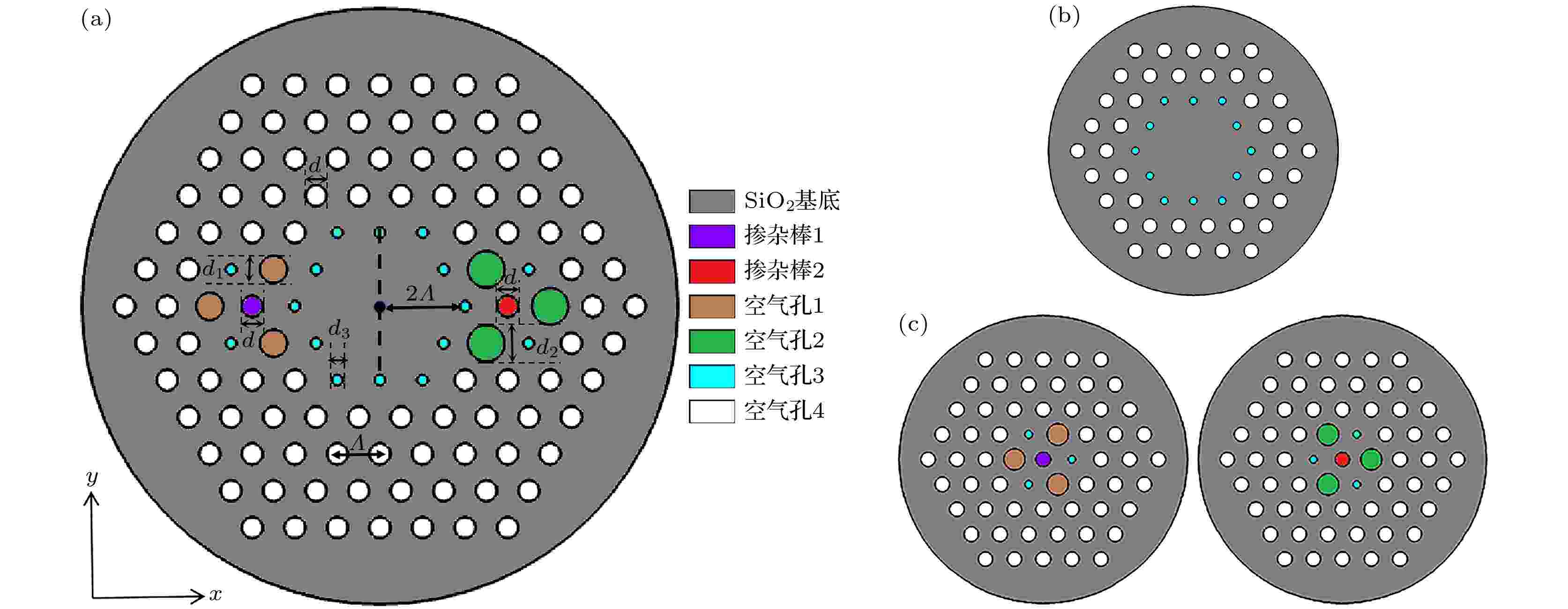
2022, 71 (4): 044206.
doi: 10.7498/aps.71.20211187
Abstract +
A broadband mode-division multiplexer based on asymmetric three-core photonic crystal fiber is proposed in this paper. The device is mainly composed of a central core, which can provide the transmission of fundamental mode and higher-order mode, and two side cores providing fundamental mode transmission. According to the theory of optical coupling, the LP01 mode light is input to the three fiber cores at the initial port separately, and in the transmission process the LP01 mode on the left side core will be coupled and converted into the LP21 mode light in the central core gradually. Similarly, the LP01 mode of the right side core is transformed into the LP31 mode of the center core. By optimizing the structural design and selecting the length of optical fiber, the best conversion from side core into central core can be completed at the output end simultaneously, thereby realizing the multiplexing of LP01, LP21 and LP31 modes in the central core. In the opposite direction, if the output end of the device is used as the initial port, the demultiplexing of three modes of light from the central core to the three cores can be realized. In thiswork, the finite element method and beam propagation method are used to optimize the simulation, and the optical coupling theory and supermode theory are combined to conduct analysis and calculation. The results show that at wavelength band from 1.49 μm to 1.63 μm, the maximum insertion loss of the device is 0.72 dB, and the lowest insertion loss is 0.543 dB at 1.55 μm, which is far lower than the general evaluation standard of 1 dB insertion loss. The low insertion loss also makes it possible to design cascaded multi-core photonic-crystal-fiber mode-division multiplexer. Compared with the existing mode-division multiplexing scheme, the device is more integrated and less affected by the external environment. When it is used with multi-core space division multiplexing fiber, it can better improve the mode-conversion efficiency and mode purity, reduce the coupling complexity and expand the communication capacity.

2022, 71 (4): 044301.
doi: 10.7498/aps.71.20211642
Abstract +
Interface states have great practical applications, therefore, searching for the existence of interface states has both scientific significance and application prospects. In this work, we tilt the structure unite of two-dimensional phononic crystal with a square lattice to construct an oblique lattice possessing linear Dirac dispersion. The Dirac dispersion gives rise to a π jump of the Zak phases of the bulk bands, so that the projected band gaps at both sides of the Dirac cone have opposite signs of surface impedance, resulting in deterministic interface states at the interface formed by the phononic crystal with a square lattice and its tilted oblique lattice system.
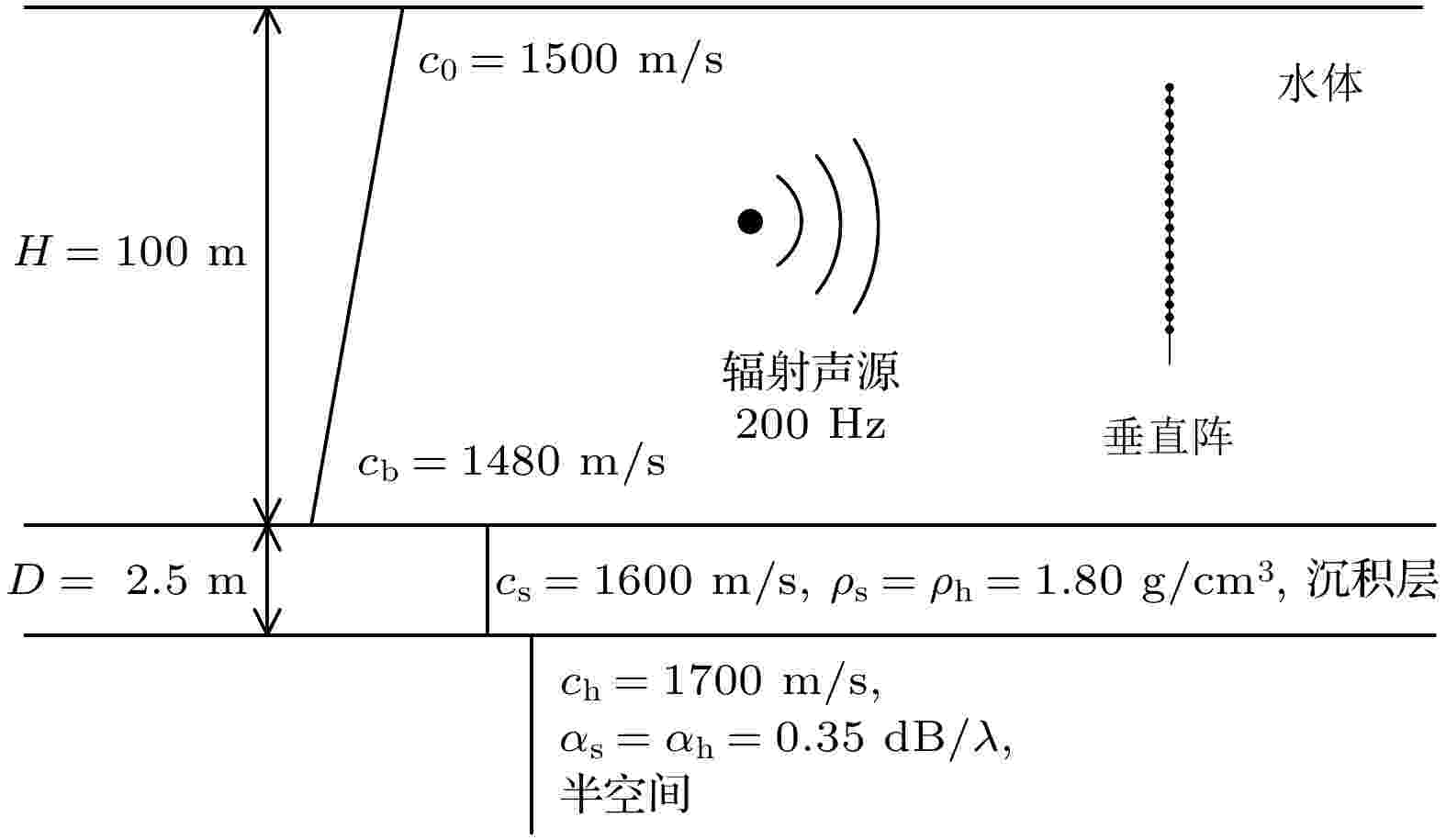
2022, 71 (4): 044302.
doi: 10.7498/aps.71.20211654
Abstract +
Wind-generated noise is ubiquitous in ocean environments and highly influences the passive sonar performance. Since it originates from sources near the ocean surface, one of its physical features is that it largely represents only the intermediate- and high-order modes. The array-level signal-to-noise ratio (SNR), which includes the array-sampled sound intensity, background noise power, and array gain, is an essential quantity determining the sonar array performance. What is investigated in this work is how the array-level SNR of the vertical line array (VLA) varies with the source depth in downward-refracting shallow water, contributed by the modal structure of the surface noise. On the assumption that the modes are well sampled, it is theoretically demonstrated that the SNR varying with the source depth can be approximated as a linear combination of the lower-order mode-amplitude intensities varying with the water depth. Particularly, when the surface noise especially dominates and the water channel is highly downward refractive, this variation can be represented nearly only by the 1st-order mode-amplitude intensity varying with depth. The structure is meaningful in practice. It suggests the SNR will be inherently larger when the source is submerged than it is near the ocean surface, and will be maximized at a source depth slightly below the 1st-order mode peak across different source ranges. The above assertions are demonstrated in a typical downward-refracting shallow-water channel; the effects from the dominant degree of the surface noise, sound speed gradient in water column, and array aperture are investigated numerically. The obtained results are shown below. 1) Under certain circumstances, the variation of SNR with source depth is nearly irrelevant to the source range. 2) When the surface noise is more significant, the largest SNR in a certain source range will be more significantly larger than the SNR for the source near the surface, the corresponding source depth will be closer to that presenting the 1st-order mode’s peak, and the variation of SNR with source depth is increasingly irrelevant to the source range. 3) A stronger downward-refracting sound speed also enhances this SNR superiority and irrelevance to the source range, but causes the source depth presenting the largest SNR to be more deviated from the 1st-order mode’s peak. 4) Although the structure is unraveled on the assumption that the VLA spans the full water column, it can be seen when the VLA does not but covers the low-order modes' main part; when the array aperture is insufficiently large it will become approximately periodic in the source range, with the source depth presenting the largest SNR fluctuating lightly and nearly periodically around the 1st-order mode peak.
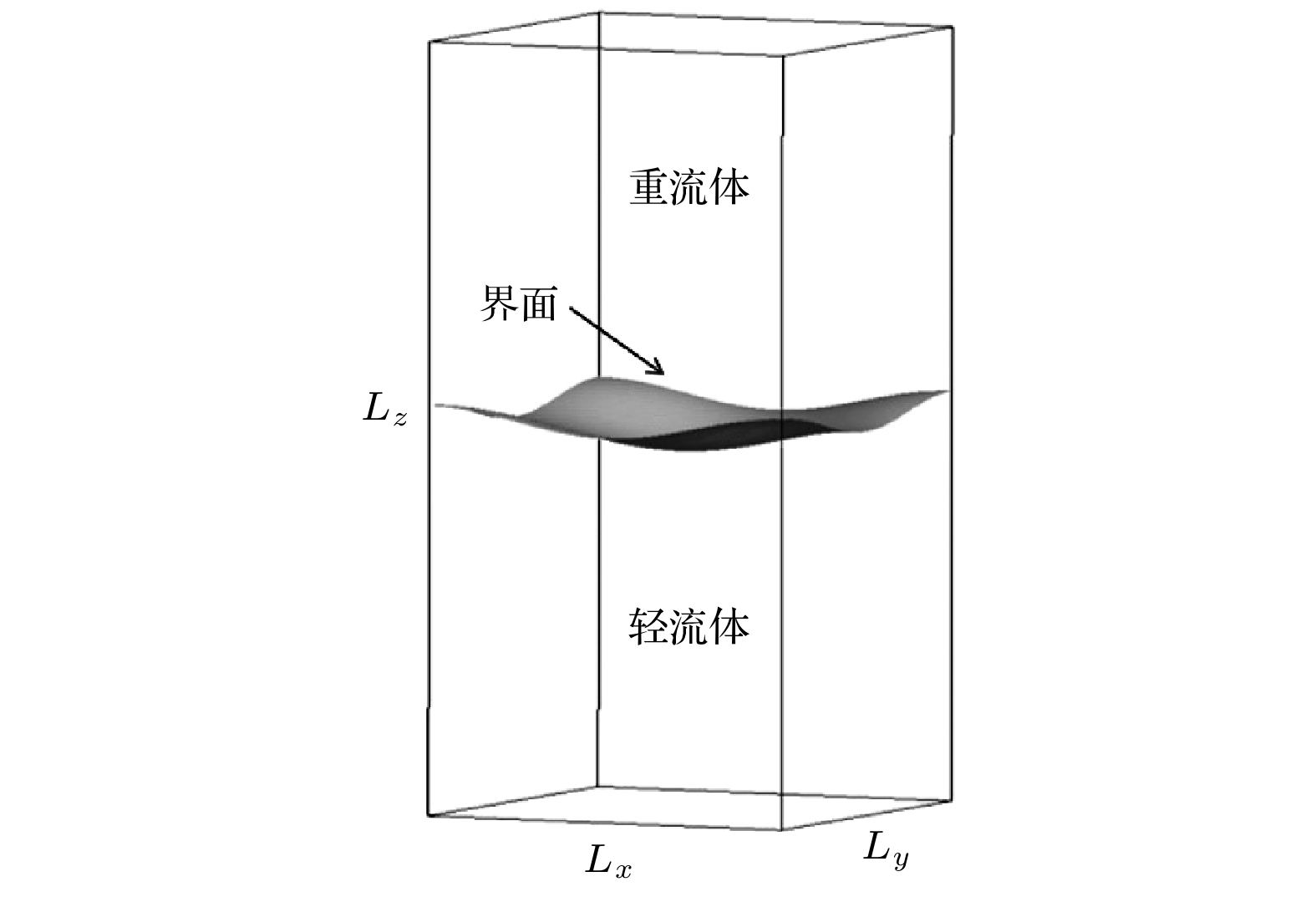
2022, 71 (4): 044701.
doi: 10.7498/aps.71.20212061
Abstract +
In this paper, the development of three-dimensional fluid interfacial Rayleigh-Taylor (RT) instability coupled with the surface tension was numerically studied using the mesoscopic lattice Boltzmann method. We mainly analyzed the influence of surface tension on fluid interfacial dynamics and spike/bubble late-time growth. The numerical experiments show that there exists the critical surface tension ($\sigma_{\rm{c}}$ ) in the three-dimensional RT instability, above which the RT phenomenon does not appear and below which it would take place. It is found that the critical surface tension increases with the fluid Atwood number and the corresponding numerical predictions show good agreements with those of the theoretical analysis ${\sigma_{\rm{c}}}= {{({{\rho_{\rm{h}}}-{\rho_{\rm{l}}}})g}}/{{{k^2}}}$ . In addition, we can find that increasing surface tension reduces the roll-up of the interface and the complexity of interfacial structure, also preventing the breakup of the interface into the individual droplets. The late-time dynamics of phase interface change from the asymmetric development to the symmetry with respect to the middle axis. When the surface tension is sufficiently low, the spike and bubble amplitudes almost no longer change with it, and further increasing the surface tension can slow down the growth of the spike and bubble amplitudes. Furthermore, we can observe that the development of the high-Reynolds-number RT instability under different surface tensions can also be divided into four distinct stages, including the linear growth, saturated velocity growth, reacceleration, and chaotic mixing. The spike and bubble grow with approximately constant velocities at the saturated stage and their asymptotic values are consistent with those of the modified potential flow theory. In the following, the spike and bubble driven by the increasing Kelvin-Helmholtz vortices are accelerated such that their evolutional velocities exceed the solutions of the potential flow model at the reacceleration stage. The reacceleration stage cannot last infinitely and the spike and bubble velocities at the late time fluctuate with time, implying that the growth of the RT instability enters into the chaotic mixing stage. By numerical analysis, we demonstrate that the three-dimensional RT instability at the chaotic mixing stage has a quadratic growth and also report that the spike and bubble growth rates decrease with the surface tension in general.
PHYSICS OF GASES, PLASMAS, AND ELECTRIC DISCHARGES
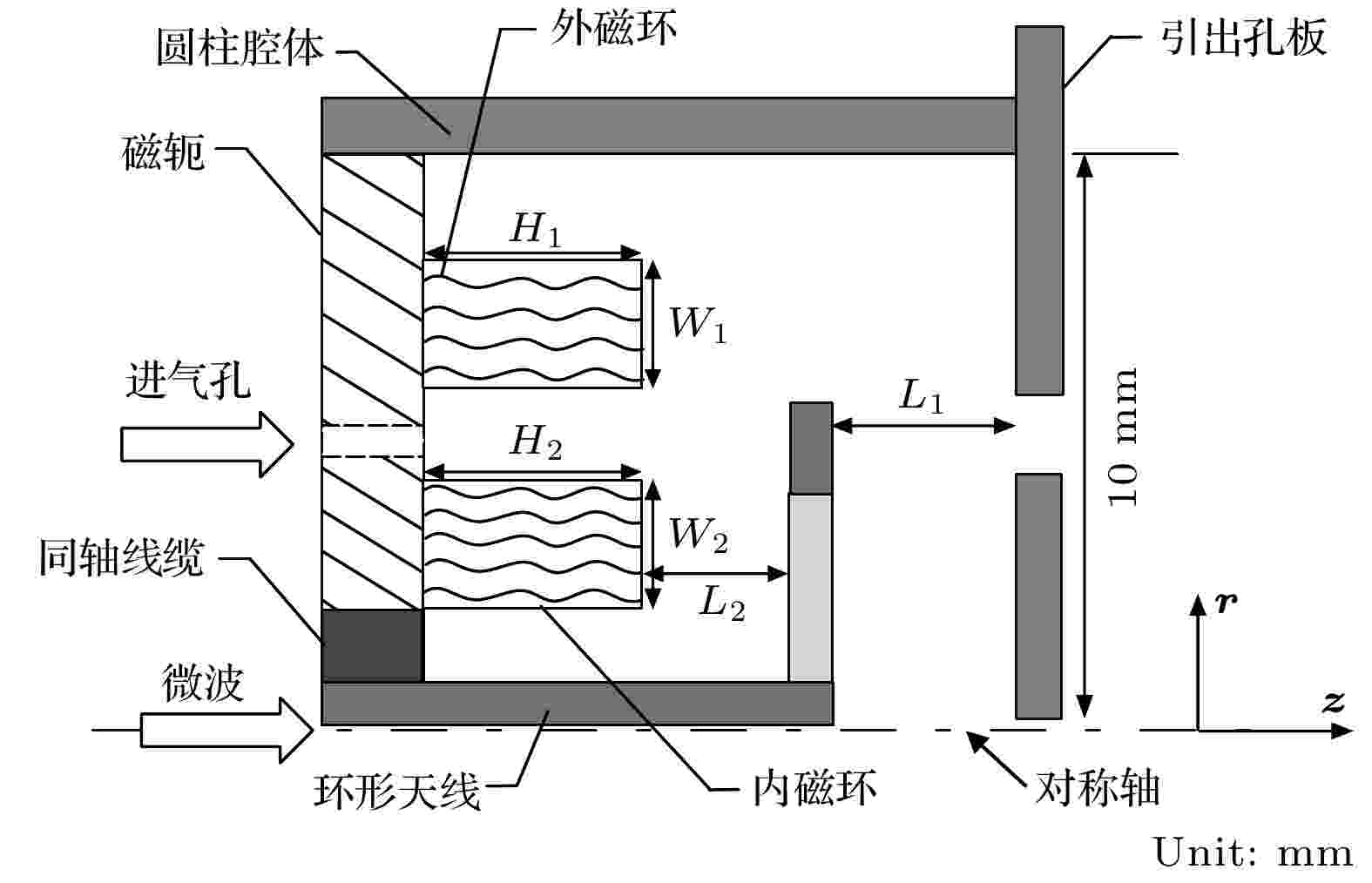
2022, 71 (4): 045201.
doi: 10.7498/aps.71.20211519
Abstract +
The electron cyclotron resonance (ECR) neutralizer is an important part of the micro ECR ion thruster. The electrons extracted from the neutralizer are used to neutralize the ions extracted from the ECR ion source, thereby avoiding the surface charges accumulating on the spacecraft, and the behaviour of electron extraction affects the overall performance of the thruster. In order to investigate the electron extraction through the orifices of the micro ECR neutralizer, a two-dimensional particle-in-cell with Monte Carlo collision (PIC/MCC) model is established in this work. The effects of different magnetic circuits on the electron extraction of the neutralizer and the influence of different cavity lengths on the wall current loss are studied through numerical simulation. The effects of different magnetic circuit structures on the electron extraction and wall current loss of the neutralizer are studied. The calculation results show that the position of the ECR layer and the magnetic flux lines near the extraction orifices are very important for the electron extraction performance of the neutralizer. When the ECR layer is located upstream of the antenna, electrons are easily lost in migration and diffusion motion, and the energy required for the electrons to cross the potential well before the extraction hole is higher. If more magnetic flux lines pass parallelly through the extraction orifices, the neutralizer requires a small voltage to extract the same electron current. When the ECR layer is cut by the antenna or is located downstream of antenna, more electrons may migrate along the magnetic flux lines to the vicinity of the extraction orifices, thereby reducing the voltage of collector plate. The effects of different cavity lengths on the extraction of electrons under the same magnetic circuit structure are studied. It is found that increasing the length of the cavity allows more parallel-axis magnetic flux lines to pass through the extraction holes to avoid electron loss on the surface of the extraction plate, and thus increasing the extraction electron current. The research results conduce to designing a reasonable neutralizer magnetic circuit and cavity size.
CONDENSED MATTER: STRUCTURAL, MECHANICAL, AND THERMAL PROPERTIES

EDITOR'S SUGGESTION
2022, 71 (4): 046101.
doi: 10.7498/aps.71.20211674
Abstract +
The beam splitter is an optical element that divides a beam of light into two or more subbeams. It is an essential component in many optical experiments. X-ray has the characteristics of short wavelength and strong penetration ability, making it hard to use the optical elements in the visible-light region. Therefore, it is necessary to develop optical elements suitable for X-rays. The atomic layer spacing of the perfect crystal is of the same order of magnitude as the X-ray wavelength, so the crystal diffraction effect can be used to achieve the X-ray modulation. In this paper, the beam splitting characteristics of Laue crystal are analyzed based on X-ray diffraction dynamics and the influences of crystal absorption and incident light angular divergence on the rocking curves of transmission and diffraction are simulated. The modulation of the crystal diffraction in-plane angle and crystal thickness to Laue diffraction beam-splitting ratio is presented quantitatively. The results show that the kinematical theory of X-ray diffraction is not enough to analyze the beam splitting characteristics of the crystal. It is necessary to consider the interaction between the wave fields in the crystal and use the Pendellӧsung effect in the dynamical theory of X-ray diffraction to explain the change of the crystal beam-splitting ratio quantitatively. The influence of angular divergence and crystal absorption are considered in the simulation. The angular divergence broadens the bandwidth of the diffraction, thereby reducing diffraction intensity. The crystal absorption results in asymmetry and peak shift of the transmission curve and affects the intensity of diffraction and the intensity of transmission beam. The experimental results show that the non-dispersive (+n, –n) configuration can effectively eliminate the influence of angle divergence. The beam-splitting ratio can be adjusted in a small range (±2%) by changing the in-plane angle and adjusted in a wide range (±75%) by changing the crystal thickness, thereby realizing the quantitative modulation of the intensity of transmission and diffraction beam.
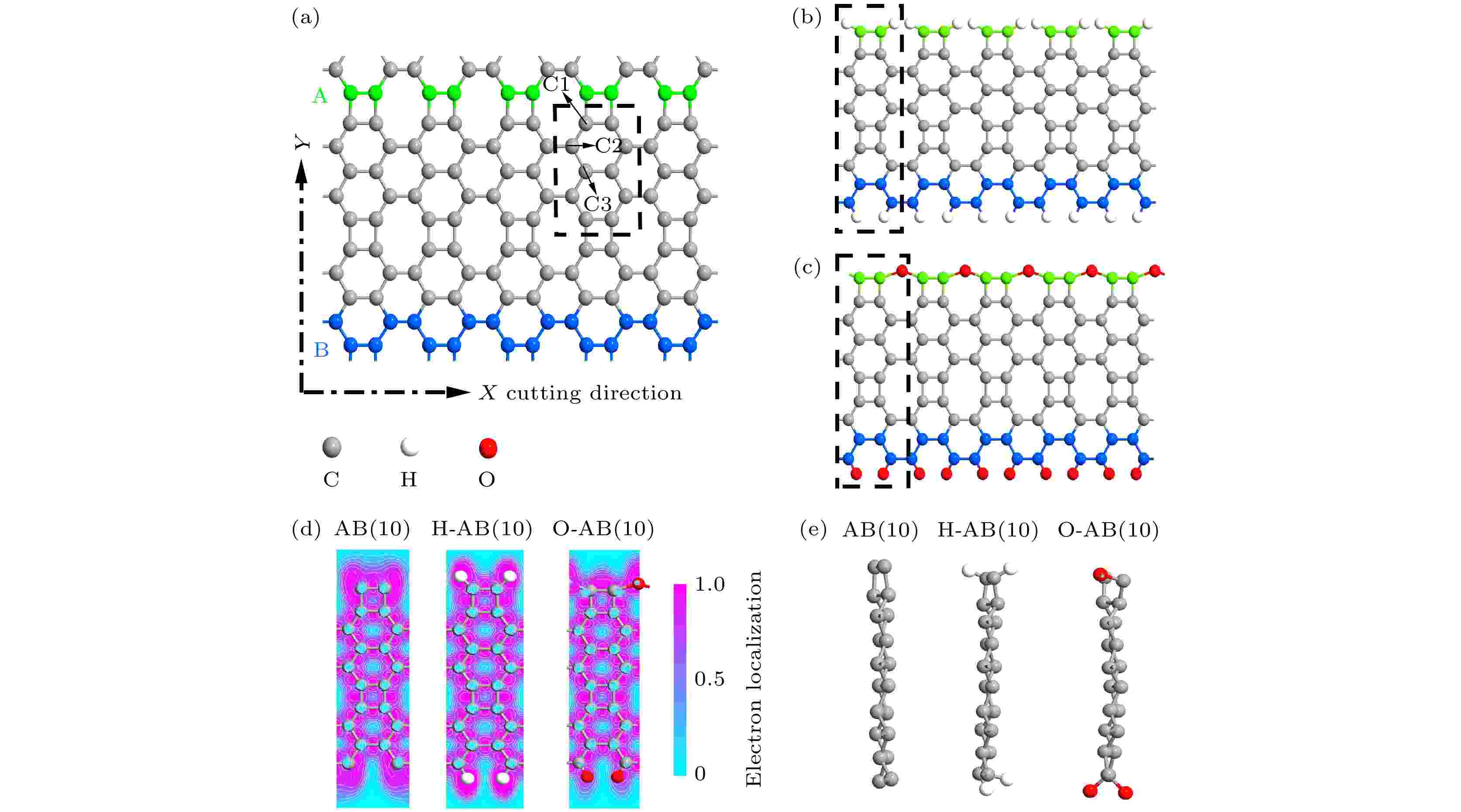
2022, 71 (4): 046102.
doi: 10.7498/aps.71.20211748
Abstract +
Net-Y is a new two-dimensional carbon structure, which has attracted research interest recently. Here, we study the relevant AB-type ribbons with edge modification, focusing on their strain controlling effects on their electronic structure and device characteristics. Intrinsic ribbons are metallic, but hydrogen or oxygen termination can transform them into semiconductors. Applying strain can effectively control the band gap size, resulting in a transition from an indirect band gap to a smaller direct band gap under appropriate strain, favorably to light absorbing. Strain can also change the work function of ribbons, especially for compressive strains, the work function is lowered significantly, which is beneficial to the improving of the field emission behaviors of ribbons. The analysis demonstrates that the change in band gap size is closely related to the variation of bonding and non-bonding composition between atoms with strain, while the change of work function is due to the variation of the attraction force and repulsion force between atoms upon strain. More interestingly, the strain can significantly regulates the I-V characteristic of device based on related ribbons. Therefore, a strain-gated mechanical switch with a very high current switching ratio Ion/Ioff can be obtained by making it reversibly work between the “on” and “off” states with stretching and compressing ribbons, which is of great significance in developing the logic circuits for flexible wearable electronic devices.
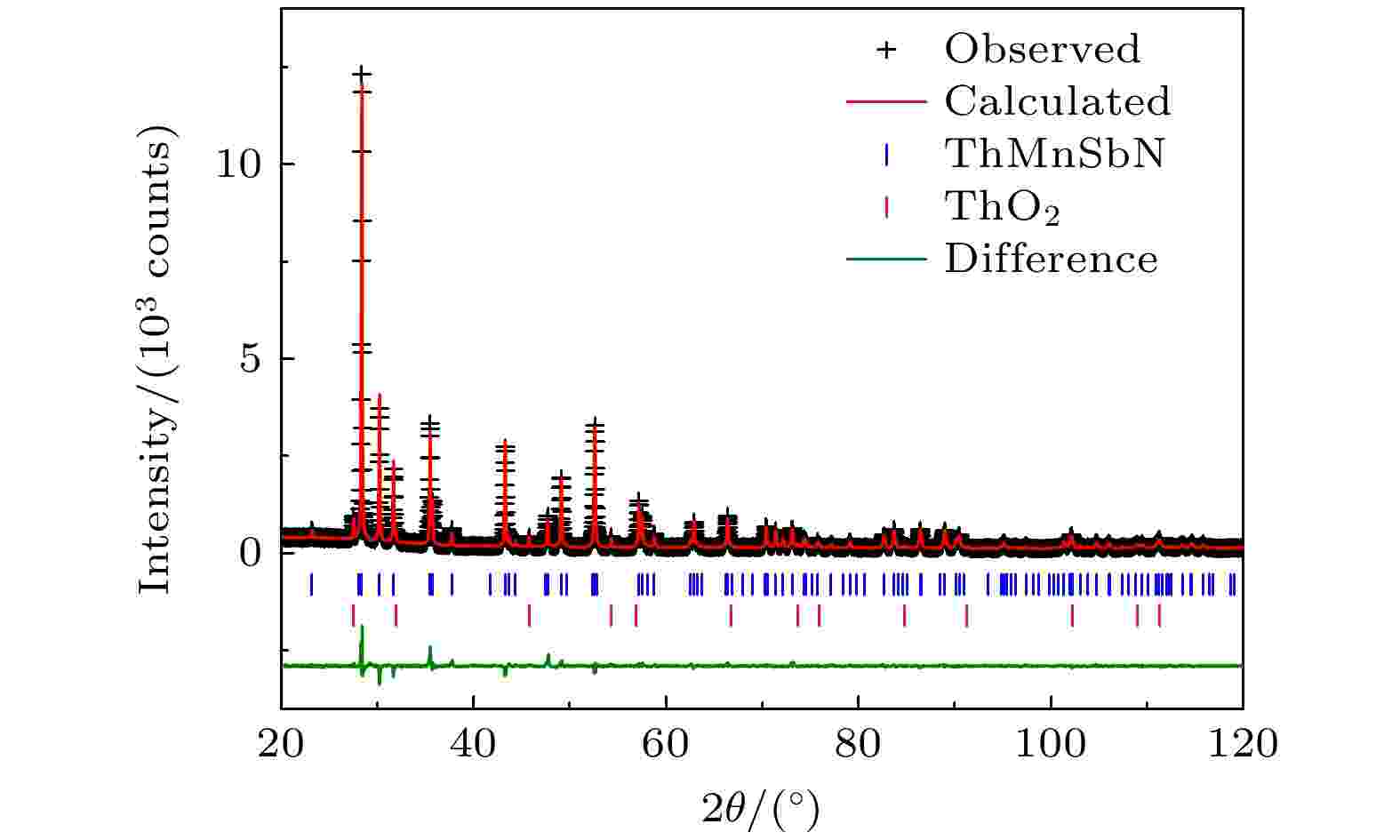
EDITOR'S SUGGESTION
2022, 71 (4): 046103.
doi: 10.7498/aps.71.20211706
Abstract +
A quasi-two-dimensional manganese-based compound ThMnSbN is synthesized by the solid-state reaction method. Structural refinement based on X-ray powder diffraction shows that the compound structure belongs to the P4/nmm space group. The lattice parameters are a = 4.1731 Å and c = 9.5160 Å. Electrical transport measurements show that the resistivity of the compound is the lowest in the Mn-based family. When cooling it, its resistivity rises slowly and shows a shoulder-like anomaly at 16 K. Also, the magnetic susceptibility exhibits an anomaly at the very same temperature. Though the specific heat data indicate the inexistence of transition-induced anomaly, the electron specific heat coefficient of γ = 19.7 mJ·mol–1·K–2 is derived by fitting the low-temperature C-T curve. This γ value is much higher than those of the isostructural manganese-based compounds. Thus, the specific heat is consistent with the low resistivity, implying a considerable electronic density of states near the Fermi surface for ThMnSbN. By comparing the crystal structure for a group of ZrCuSiAs-type compounds, various chemical pressure effects of the fluorite-type Th2N2 layer on the conducting layer in different compounds are discussed.

2022, 71 (4): 046104.
doi: 10.7498/aps.71.20211691
Abstract +
The parasitic effect inside metal oxide field effect transistor regarded as the basic structure of large scale digital circuits, has long been considered as an important factor affecting the disturbance, upset and latchup of integrated circuits in pulsed γ-ray radiation environment. To investigate the turn-on mechanism of vertical parasitic effect in NMOSFET induced by pulsed γ-ray radiation, the 40 nm, 90 nm and 180 nm NMOSFET device models are constructed by TCAD and the normal electrical characteristics are calibrated. The trend of vertical parasitic triode current gain, the turn-on conditions of vertical parasitic triode and their influence on working state of NMOSFET are obtained. The simulation results are shown below. 1) The disturbance of well potential inside NMOSFET induced by pulsed γ-ray radiation is the main reason for the turn-on of vertical parasitic triode. 2) When vertical parasitic triode is turn-on, the large secondary photocurrent will be generated inside NMOSFET which will affect the working state of the transistor. 3) The current gain of vertical parasitic triode in NMOSFET decreases with the technology node decreasing. The results provide a theoretical basis for studying the transient ionizing radiation effects of electronic devices.
CONDENSED MATTER: ELECTRONIC STRUCTURE, ELECTRICAL, MAGNETIC, AND OPTICAL PROPERTIES
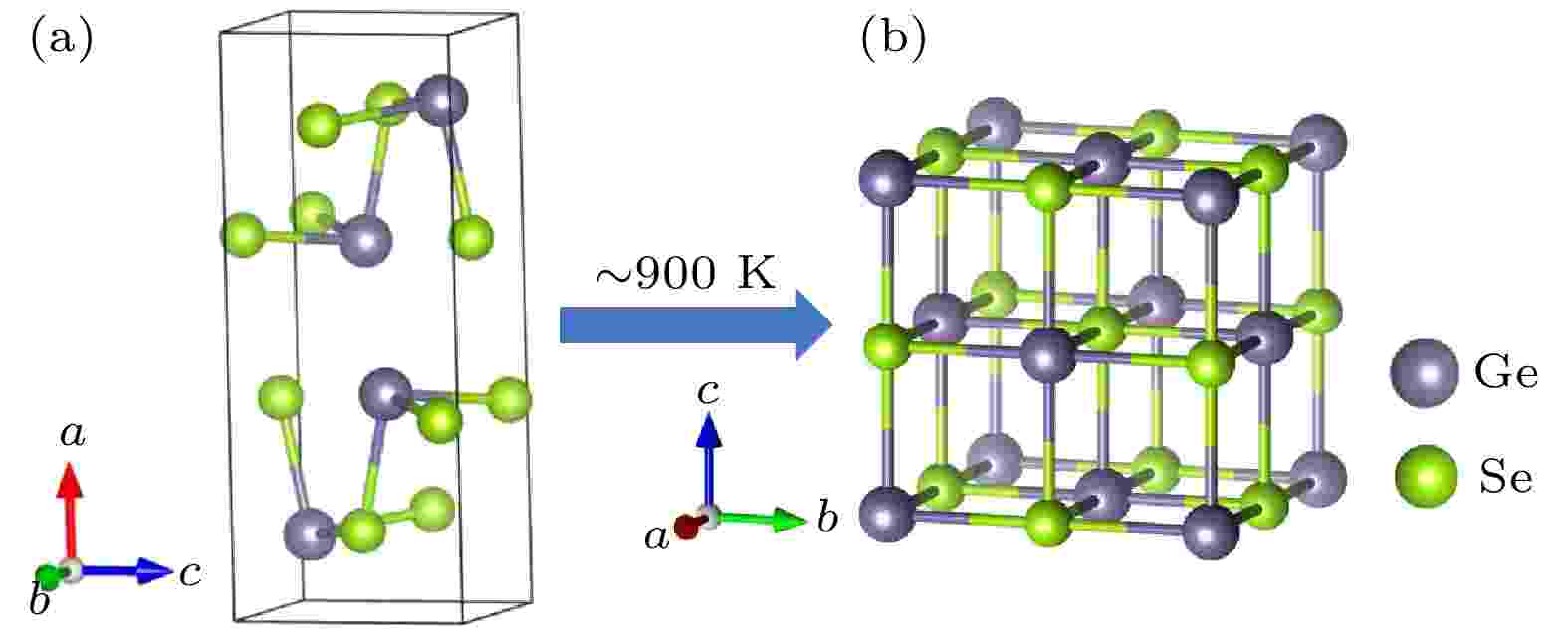
EDITOR'S SUGGESTION
2022, 71 (4): 047101.
doi: 10.7498/aps.71.20211843
Abstract +
In the thermoelectric field, GeSe is a two-dimensional layered semiconductor with a large band gap, intrinsically low carrier concentration and poor thermoelectric figure of merit ZT. In this work, a series of GeSe1–xTex (x = 0, 0.05, 0.15, 0.25, 0.35, 0.45) polycrystalline samples is prepared by melting and quenching combined with spark plasma activation sintering process. The influences of Te content on the phase structure and thermoelectric transport properties of GeSe are systematically studied. The results indicate that with the increase of Te content, the crystal structure of GeSe gradually changes from orthorhombic to rhombohedral structure. This reduces the band gap of the material, and simultaneously increases the carrier concentration and mobility. Meanwhile, the energy band degeneracy of the compound increases significantly because of enhanced crystal symmetry in this process, thereby considerably improving the effective mass of carriers. Altogether, the power factor of the rhombohedral GeSe is increased by about 2 to 3 orders of magnitude compared with that of the orthorhombic phase GeSe. In addition, the rhombohedral phase GeSe has abundant cationic vacancy defects and softened phonons arising from its ferroelectric feature, leading the lattice thermal conductivity to be 60% lower than orthorhombic one. The GeSe0.55Te0.45 sample achieves a peak ZT of 0.75 at 573 K, which is 19 times that of pristine GeSe. Crystal structure engineering could be considered as an effective way of improving the thermoelectric performance of GeSe compounds.

2022, 71 (4): 047401.
doi: 10.7498/aps.71.20211895
Abstract +
All-inorganic perovskite CsPbX3 (X = Cl, Br and I) quantum dots (QDs) have been wildly utilized in optoelectronic devices due to their tunable photoluminescence, high photoluminescence quantum yield (PLQY), and narrow-line width photoluminescence. However, the blue luminescence PLQY of CsPbX3 perovskite quantum dots is still lower than their red and green luminescence counterparts (PLQYs nearly 100%). Here in this work, we present a handy strategy to synthesise the ultra-small blue luminescence Tin-doped CsPbBr3 perovskite QDs by supersaturated recrystallization synthetic approach at room temperature, and the particle size of as-prepared QDs is lower than 4 nm. The crystal structure and optical property of Tin doped CsPbBr3 QDs are characterized by XRD, TEM, ultraviolet-visible spectrophotometer, and fluorescence spectrophotometer. The results show that the particle size of as-prepared QDs is slightly shrunk from 3.33 nm (SnBr2 0.03 mmol) to 2.23 nm (SnBr2 0.06 mmol) as the SnBr2 adding quantity increases, but there is no obvious change in the lattice spacing of doped QDs. The partial substitution of Pb for Tin leads the optical spectra to blue-shift from 490 nm (SnBr2 0.03 mmol) to 472 nm (SnBr2 0.06 mmol). The highest PLQY and the strongest XRD diffraction of ultra-small Tin doped CsPbBr3blue luminescence QDs are obtained by adding SnBr2 0.05 mmol, and the blue luminescence peak is located at 472 nm with the PLQY of 53.4%. There is no any change in PL peak of Tin doped CsPbBr3 QDs (SnBr2 0.05 mmol) by storing it under the ambient atmosphere for 15 days, and the PLQY of Sn2+ doped QDs is still 80% of the initial after 15 days. It is concluded that the crystallization and optical property can be effectively improved in Tin doped CsPbBr3 QDs by partially replacing appropriate quantity of Pb by Tin.
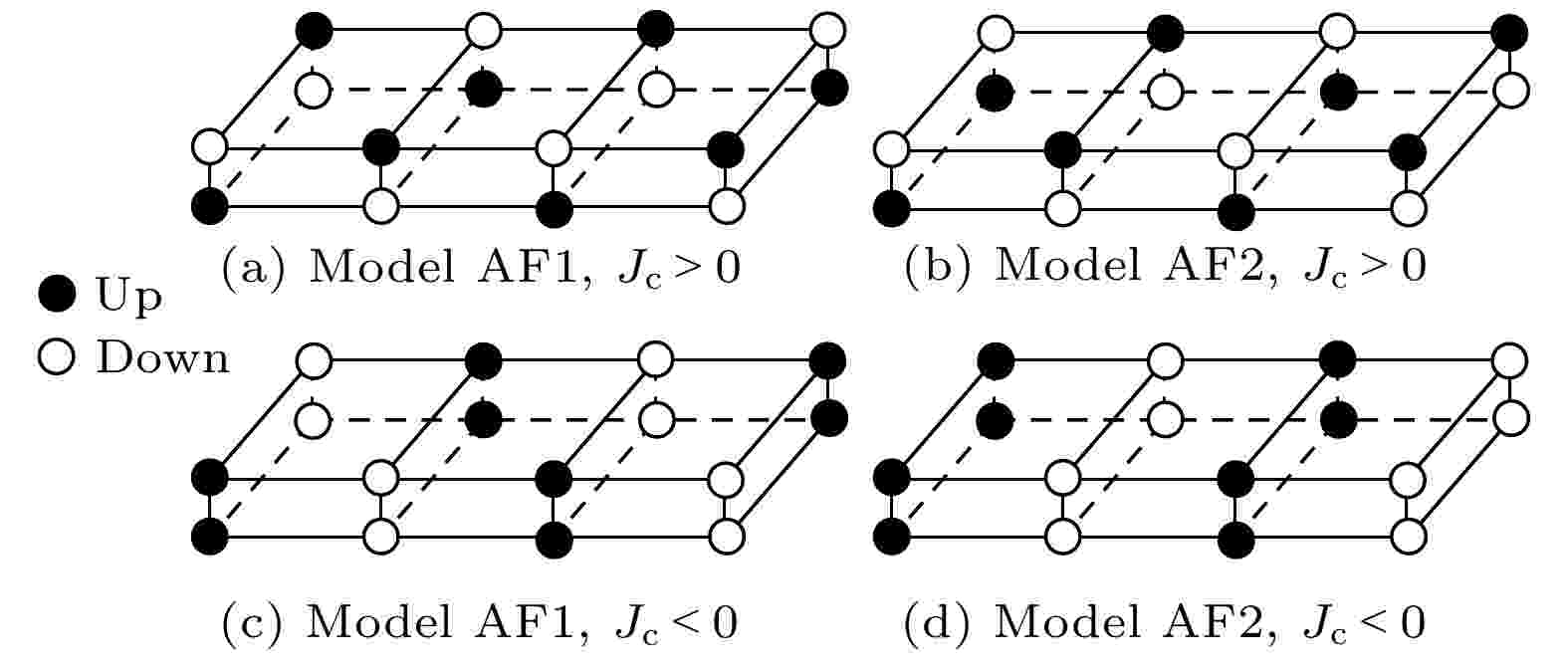
2022, 71 (4): 047501.
doi: 10.7498/aps.71.20211685
Abstract +
In this paper, we investigate the phase transition of the spin-1 frustrated model on a square-lattice bilayer by the double-time Green’s function method. The effects of the interlayer coupling parameter $ {J_c} $ and single-ion anisotropy D on phase transformation between the Nèel state (AF1) and collinear state (AF2) are explored. Our results show that if only the parameters $ {J_c} $ and D are not equal to zero at the same time, the two states can exist and have the same critical temperature at $ {J_2} = {J_1}/2 $ , which represents the nearest neighbor exchange. Under such parameters, a first-order phase transformation between these two states below the critical point can occur. For $ {J_2} \ne {J_1}/2 $ , although both states may exist, their Neel temperatures differ from each other. If the Nèel point of the AF1 (AF2) state is larger, then at very low temperature, the AF1 (AF2) state is more stable. Thus, in an intermediate temperature, a first-order phase transition between these two states may also occur.

EDITOR'S SUGGESTION
2022, 71 (4): 047801.
doi: 10.7498/aps.71.20211720
Abstract +
In this paper, two kinds of distributed Bragg reflectors (DBRs) with high-reflective-film structure and filter structure are designed and evaporated on the top of GaN-based resonant cavity light emitting diode (RCLED), respectively. Firstly, the reflectivity spectra of the two kinds of DBRs are simulated. Then, the differences in performance including optical longitudinal modes, spectral linewidth, and output light intensity between the two kinds of RCLED devices with different top mirrors, are compared and analyzed. Finally, the influence of the top mirror reflection characteristics on the output spectrum of the RCLED is studied in detail. The results show that the top mirror is an important part of RCLED, and its reflection characteristics determine the optical performance of the device. For the conventional DBR with high-reflective-film structure, its reflectivity spectrum has a wide high-reflection band. Accordingly, the spectral linewidth of the RCLED can be effectively narrowed by using the conventional DBR as the top mirror. However, the spectrum still consists of multi-longitudinal modes. For the DBR with filter structure, its reflectivity spectrum has a narrow high-transmittance band at the central wavelength. Depending on the modulation effect of the high-transmittance band to the output light, single longitudinal mode light emission is realized for the RCLED with the specially designed DBR as the top mirror, which shows a broad application prospect in optical communication and optical fiber sensing. Moreover, the spectral characteristics of the RCLED can be further optimized to meet its application requirements in much more fields, by designing the top mirror structure and changing its reflectivity spectrum characteristics.
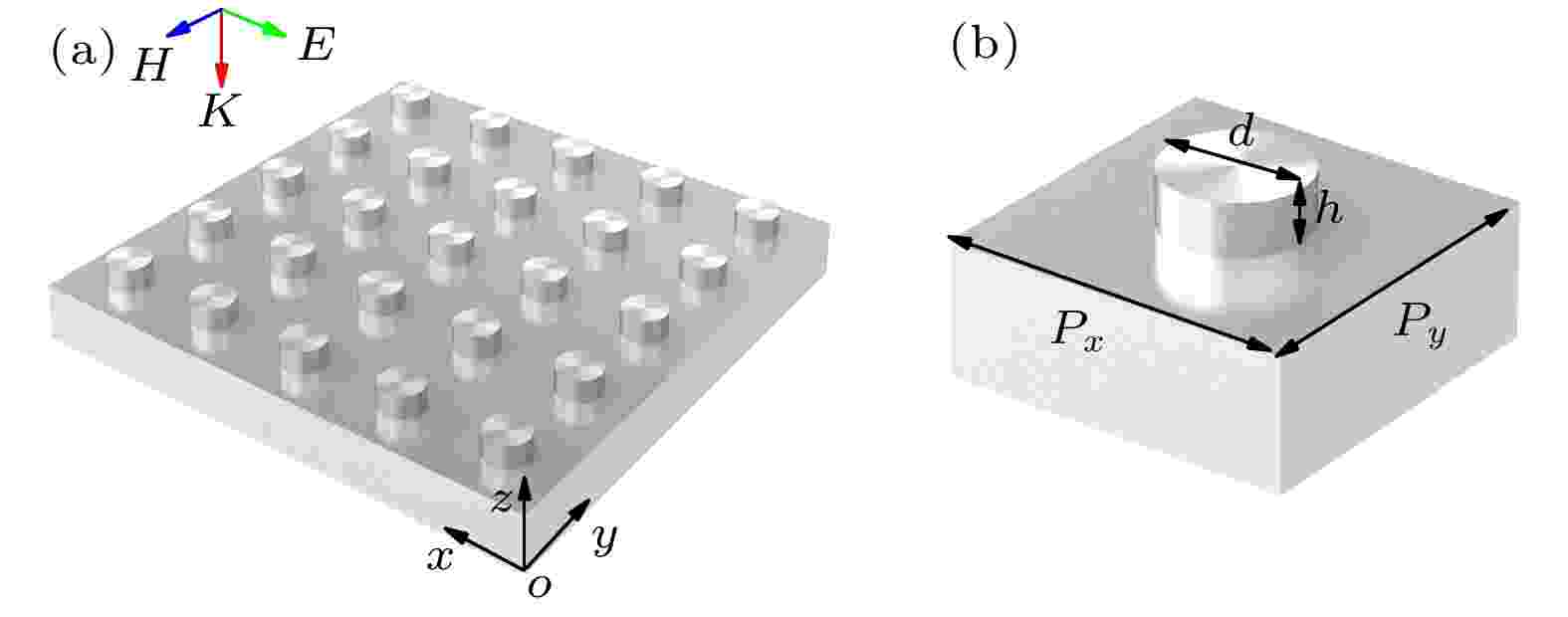
2022, 71 (4): 047802.
doi: 10.7498/aps.71.20211629
Abstract +
Periodic nanoparticle arrays with lower loss or high-quality (Q) factor resonances have made great advances in numerous applications. Such arrays can support narrow resonance modes by the hybridization of plasmonic-photonic modes, known as lattice plasmon modes (LPMs). The LPMs arise from the diffraction-induced coupling between localized surface plasmon resonances (LSPRs) of nanoparticles in symmetric or quasi-symmetric refractive index environment. To date, the great majority of researches have focused on the coupling of dipolar modes to in-plane orthogonal diffraction waves in nanoparticle arrays, resulting in dipolar lattice plasmon modes (DLPMs). However, there are few studies about quadrupolar lattice plasmon modes (QLPMs) for parallel coupling in symmetric environment, especially for high Q-factor QLPMs. In this work, we explore the sharp QLPMs of the silver nanodisk arrays by x-polarized light at normal incidence. In the first place, the scattering cross-section and near-field electric field distribution of single silver nanodisk indicate the existence of dipolar and quadrupolar LSPRs, thus, the optical responses of silver nanodisk arrays exhibit the peak-and-dip profiles of DLPMs and QLPMs at different wavelengths. Also, the electromagnetic field distributions confirm that the parallel propagating electric field introduces QLPM and results in electric field delocalization, while DLPM is existent in another way in periodic silver nanodisk arrays. Moreover, the position, linewidth and lineshape of the QLPM strongly depend on the role of lattice period. We enable these resonance modes to be selectively accessed and individually optimized by tuning lattice periods in the x- or y-direction. By changing the lattice period in the x-direction from 300 to 550 nm in steps of 50 nm, the dip of transmission intensity increases gradually, and when periods in the two directions are equal, the transmission dip exhibits a narrow-band QLPM resonance with a linewidth of 0.4 nm, corresponding quality factor is as high as Q = 1815 under the x-polarized light. In particular, by varying periods in the y-direction, the QLPM can also be manipulated in a range from an asymmetric Fano-like lineshape peak to a dip. The acquisition of these results may provide a design strategy for high-Q factor resonance in nanolaser, sensing, and nonlinear optics.
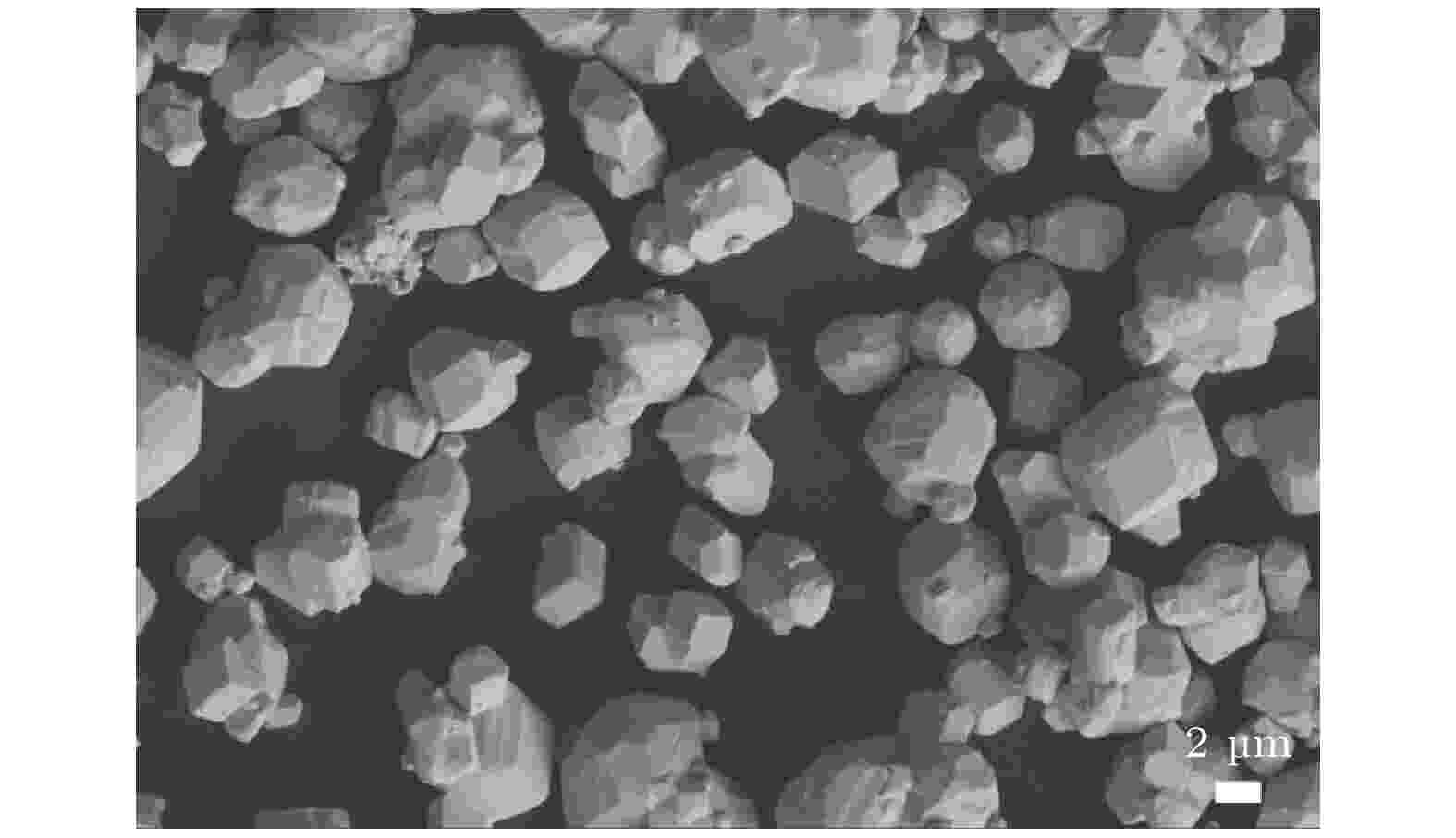
2022, 71 (4): 047901.
doi: 10.7498/aps.71.20211684
Abstract +
INTERDISCIPLINARY PHYSICS AND RELATED AREAS OF SCIENCE AND TECHNOLOGY
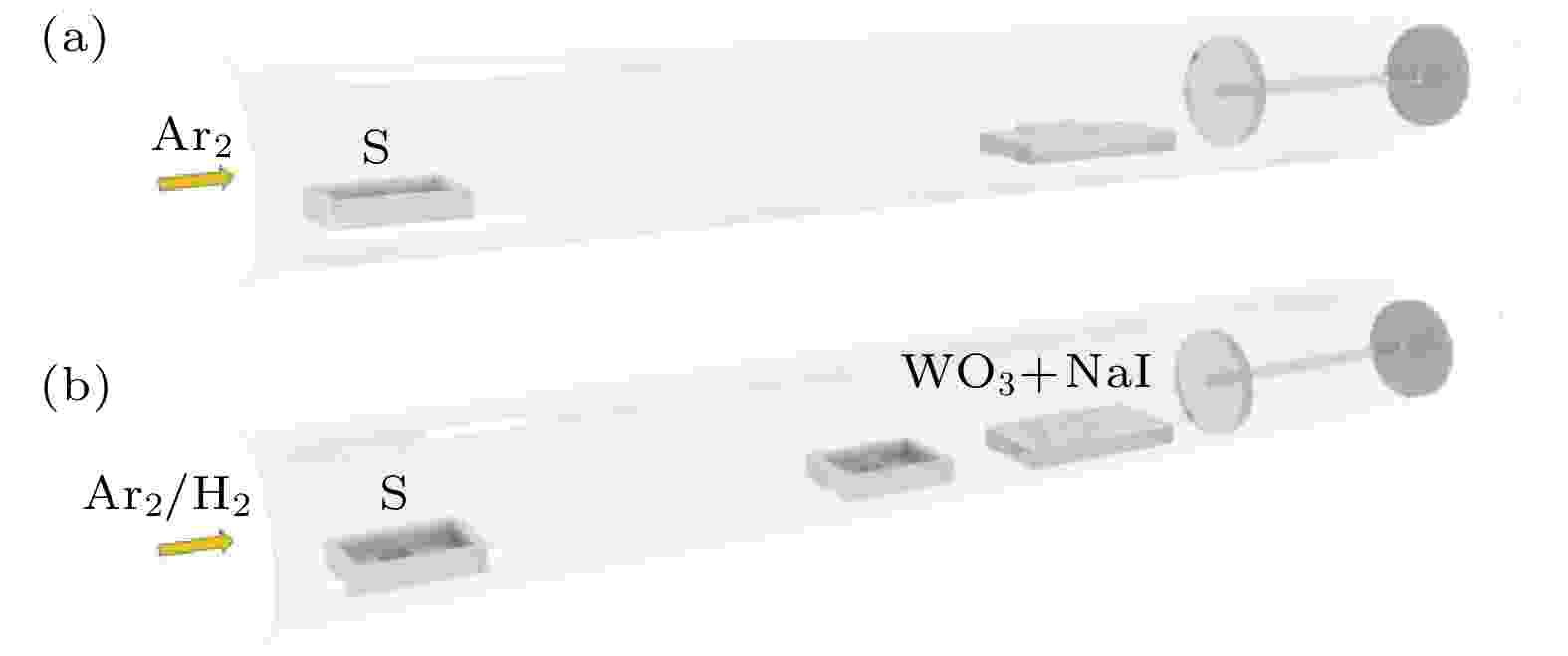
2022, 71 (4): 048101.
doi: 10.7498/aps.71.20211735
Abstract +
Molybdenum disulfide (MoS2), as a kind of two-dimensional(2D) material with novel physical properties and excellent electrical performances, has great potential applications in electronic devices. Efficient and controllable growth of large-size single crystal MoS2 is a major difficulty that must be overcome towards scalable production. Chemical vapor deposition (CVD) is considered as the most promising means for industrial production of 2D materials. Here in this work, the high-quality and millimeter-level single crystal MoS2monolayer grows on molten glass by the pre-chemical vapor deposition, in which MoO3 film deposited on the molten glass is used as Mo precursor instead of MoO3 powder. In addition, by introducing WO3 powder into such a CVD system, MoS2-WS2 lateral heterojunctions can also be obtained. Raman and PL measurements indicate that the as-grown MoS2 monolayer samples possess high quality. The Back-gate FETs are fabricated on SiO2/Si substrates by using transferring elelctrode methods to investigate the electrical properties of the as-grown MoS2 crystals. At room temperature and atmosphere pressure, the on-off ratio can reach 105 and the carrier mobility can arrive at 4.53 cm2/(V·s). The low-cost and high-quality large-size material growth method pave the way for the scalable production of such a 2D material based electronic devices.

2022, 71 (4): 048201.
doi: 10.7498/aps.71.20211619
Abstract +
It is one of basic tasks to solve the electrochemical model of lithium-ion batteries for obtaining the lithium-ion concentration in the electrolyte. In order to balance the computational efficiency and electrolyte dynamic property, it is assumed that reactions occur only at interfaces between the collector and the electrolyte. Based on the analytical solution to the liquid diffusion equations, which is in the form of infinite series, a new method is proposed to solve it. Under galvanostatic profiles, the analytic solution is an infinite time series transformed into a converged sum function by using the monotone convergence theorem. Under the dynamic profiles, the infinite series solution is simplified into an infinite discrete convolution of both the input and the sum function. The sum function is truncated by its characteristic of monotonic decay approaching to zero over time, thus obtaining a finite discrete convolution algorithm. Reference to the results from a professional finite element analysis software, the proposed algorithm can produce high accuracy with less computation time under both galvanostatic profiles and dynamic profiles. Also, there is only one parameter to be configured. Therefore, our algorithm will reduce the computation burden of the electrochemical model applied to a real-time battery management system.

EDITOR'S SUGGESTION
2022, 71 (4): 048401.
doi: 10.7498/aps.71.20211124
Abstract +
The kernel adaptive filtering is an efficient and nonlinear approximation method which is developed in reproducing kernel Hilbert space (RKHS). Kernel function is used to map input data from original space to RKHS space, thus solving nonlinear problems is efficient.Impulse noise and non-Gaussian noise exist in the real application environment, and the probability density distribution of these noise characteristics shows a relatively heavy trailing phenomenon in the statistical sense. α stable distribution can be used to model this kind of non-Gaussian noise well. The kernel least mean square(KLMS) algorithms usually perform well in Gaussian noise, but the mean square error criterion only captures the second-order statistics of the error signal, this type of algorithm is very sensitive to outliers, in other words, it lacks robustness in α stable distribution noise. The kernel least logarithm absolute difference(KLLAD) algorithm can deal with outliers well, but it has the problem of slow convergence.In order to further improve the convergence speed of nonlinear adaptive filtering algorithm in α stable distributed noise background, a new kernel least logarithm absolute difference algorithm based on p-norm (P-KLLAD) is presented in this paper. The algorithm combining least logarithm absolute difference algorithm and p norm, on the one hand, the least logarithm difference criteria is ensure the algorithm to have good robustness in α stable distribution noise environment, and on the other hand, add p norm on the absolute value of error.The steepness of the cost function is controlled by p norm and a posititive constant ɑ to improve the convergence speed of the algorithm.The computer simulation results of Mackey-Glass chaotic time series prediction and nonlinear system identification show that this algorithm improves the convergence speed with good robustness,and the convergence speed and robustness better than the kernel least mean square algorithm,the kernel fractional lower power algorithm, the kernel least logarithm absolute difference algorithm and the kernel least mean p-norm algorithm.

2022, 71 (4): 048501.
doi: 10.7498/aps.71.20211744
Abstract +
In this work, β-Ga2O3 films with different thickness are prepared on (001) sapphire substrates at room temperature by the radio frequency magnetron sputtering technology, then the samples are annealed in an Ar atmosphere at 800 ℃ for 1h. The effects of film thickness on the phase composition, surface morphology, optical property, and photoelectric detection performance are investigated using XRD, SEM, UV-Vis spectrophotometer, PL photoluminescence spectrometer, and Keithley 4200-SCS semiconductor characterization system. The results show that as the film thickness increases, the film crystallinity is improved, films with a thickness of 840 nm exhibit best quality, while those with a thickness of 1050 nm declines a little in quality. The β-Ga2O3 films with different thickness exhibit obvious ultraviolet light absorption in the solar-blind region with wavelengths of 200–300 nm, and the bandgap width increases with the film thickness increasing. All the β-Ga2O3 films show a broad UV-green light emission peaks in a wavelength range of 350–600 nm. As the film thickness increases, the intensities of the emission peaks of ultraviolet, violet, and blue light are greatly reduced, indicating that oxygen vacancy-related defects (VO, VGa–VO) are greatly suppressed with film thickness increasing. Solar-blind ultraviolet photodetector is fabricated based on the β-Ga2O3 film. Its photoelectric detection performances (the photo-to-dark current ratio, responsivity, detectivity, and external quantum efficiency) also increase first and decrease then with the increase of film thickness. The β-Ga2O3 ultraviolet photodetector prepared by a thin film with a thickness of 840 nm exhibits a very low dark current (4.9 × 10–12 A) under a 5 V bias voltage and an ultraviolet light with a wavelength of 254 nm (600 μW/cm2). It exhibits a high photo-to-dark current ratio of 3.2 × 105, and a short response time of 0.09/0.80 s (rising time) and 0.06/0.53 s ratio (falling time). Its responsivity (R), detectivity (D *), and the external quantum efficiency (EQE) are 1.19 mA/W, 1.9 × 1011 Jones, and 0.58%, respectively. The prepared device has quantifiable characteristics, and its photocurrent increases almost linearly with the increase of applied voltage and optical power density, and therefore can work in a linear dynamic region, which indicates that it is very suitable for fabricating the solar-blind ultra-violet detectors.

2022, 71 (4): 048701.
doi: 10.7498/aps.71.20211626
Abstract +
The size of neuron is on a mesoscopic scale. In this paper, considering the inductance characteristics of the neuron, the classical circuit model and mesoscopic circuit model of neuron including neuron membrane inductance, membrane capacitance, potassium ion memristor and chloride ion resistance are established. Based on the classical circuit theory and the quantum theory of mesoscopic circuit, the expression of neuron membrane voltage response under external impulse excitation is derived. Substituting the electrophysiological parameters of the squid neuron into the expression of membrane voltage, we find that the membrane voltages in both models first increase and then decrease, and finally reach their corresponding resting states of zero value, and their energy values are concentrated mainly in a range of 0–30 Hz in which the brainwave frequency is. Further comparisons show that the peak value of membrane voltage and the time required to reach the peak value (peak time) in the mesoscopic circuit model are lower than those in the classical circuit model, and are closer to the experimental results after the squid axon has been stimulated, indicating that the mesoscopic circuit model can better reflect the physiological characteristics of the stimulated neurons. Based on the mesoscopic circuit model, the peak value of membrane voltage increases and the peak time decreases with the increase of external excitation intensity. Parameters such as membrane voltage peak and peak time are more sensitive to the neuron membrane capacitance. The mesoscopic circuit model of the neuron is of great significance in understanding the excitability of the stimulated neuron and also in promoting the development of quantum neural networks inspired by brain function.
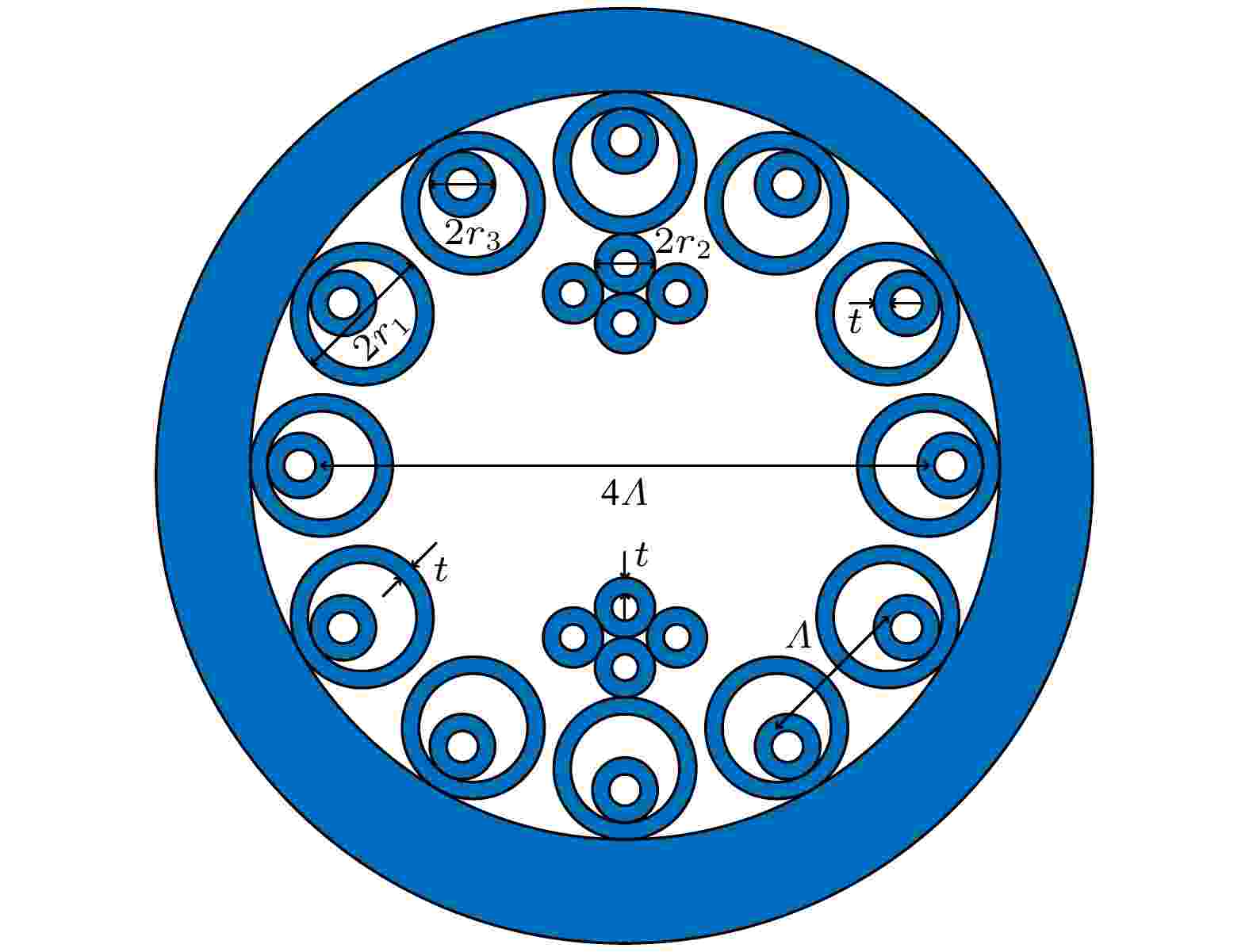
2022, 71 (4): 048702.
doi: 10.7498/aps.71.20211650
Abstract +
A novel terahertz polarization beam splitter (PBS) with low loss and large bandwidth based on double core negative curvature fiber is designed. The device takes copolymers of cycloolefin as the substrate, and 12 circular tubes with embedded tubes are evenly distributed along the circumference. The fiber core is divided into two cores through two groups of circumscribed small clad tubes symmetrical up and down. The finite-difference time-domain (FDTD) method is used to analyze its guide mode properties. The effects of various structural parameters on its beam splitting characteristics are investigated in detail, and the extinction ratio (ER), bandwidth and transmission loss of the PBS are analyzed. The simulation results show that when the incident light frequency is 1THz and the beam splitter length is 6.224 cm, the ER of x-polarized light reaches 120.8 dB, the bandwidth with ER above 20 dB is 0.024 THz, the ER of y-polarized light reaches 63.74 dB, the bandwidth with ER above 20 dB is 0.02THz, and the total transmission loss is as low as 0.037 dB/cm. Tolerance analysis shows that the PBS can still maintain good performance under the ±1% deviation of structural parameters.
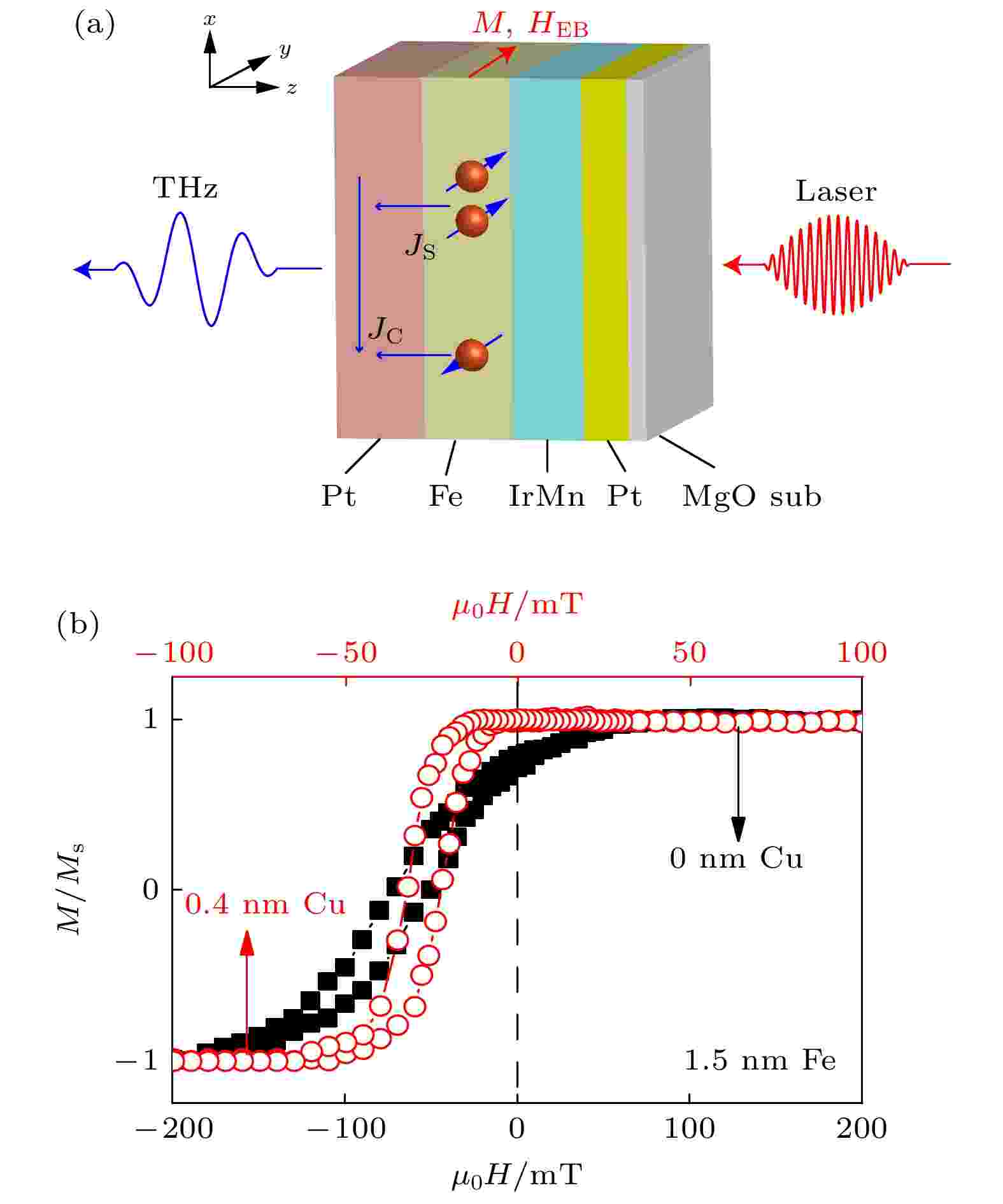
2022, 71 (4): 048703.
doi: 10.7498/aps.71.20211831
Abstract +
Spintronic terahertz (THz) emitter has more advantages such as lower cost, broader spectrum and easier operation than the commercial THz emitters, and thus has become a focus of research towards the next-generation THz source. However, in such a spintronic THz emitter, an external magnetic field is technologically required to align the orientation of the magnetization, which is detrimental for practical applications. Here, a spintronic terahertz emitter based on IrMn/Fe/Pt exchange bias structure is presented. By means of ultrafast spin injection on Fe/Pt interface followed by the spin-to-charge conversion in Pt, plus the effective magnetic field originating from the IrMn/Fe interface, the THz pulse with considerable intensity can be generated in such a structure without the assistance of external field. Besides, the remanent magnetization for thin Fe layer is enhanced by inserting an ultrathin Cu layer between the IrMn surface and the Fe surface, which is beneficial to the field-free THz emission. The range of obtained dynamic THz spectrum exceeds 60 dB and the positive saturation field can reach up to ~ –10 mT by optimizing the multilayer thickness, meeting the standard for commercial application. By rotating the sample, it is found that the polarization direction of the generated THz wave circulates simultaneously and keeps perpendicular to the direction of exchange bias field in the film plane. Moreover, we design a spin valve THz emitter based on the structure of IrMn/Fe/Pt/Fe by adding a free ferromagnetic Fe layer into the exchange bias multilayers. The emitted THz pulse amplitude is larger for the antiparallel alignment of the Fe layers at zero field than for the parallel alignment or exchange bias structure. The present work shows that the spin terahertz emitter based on IrMn/Fe/Pt exchange bias structure can produce the considerable terahertz signals without external field. Furthermore, the polarization direction of the emitted THz signal can be easily manipulated by rotating the sample. Because of this series of advantages, such exchange bias heterostructures are expected to play an important role in designing the next-generation THz source.

2022, 71 (4): 048704.
doi: 10.7498/aps.71.20211712
Abstract +
Multifocal structured illumination microscopy (MSIM) can achieve optically sectioned images with twice the diffraction limited resolution at an imaging speed of 1 Hz and an imaging depth of up to 50 μm. Compared with the traditional wide-field SIM, the MSIM has greater imaging depth and optical sectionning ability, and it is more suitable for long-term three-dimensional (3D) super-resolution imaging of living thick samples. However, the MSIM has some problems, such as slow imaging speed and complex image post-processing process. In this work, a fast super-resolution imaging method and system based on the flat-field multiplexed MSIM (FM-MSIM) is proposed. By inserting a beam shaping device into the illumination light path, the Gaussian beam is reshaped into a uniform flat-top profile, thereby improving the intensity uniformity of excitation multi-spot focal array and expanding the field of view. By elongating each diffraction limited excitation focal point four times along the Y direction to form a new multiplexed multifocal array pattern, the number of scanning steps is reduced, the energy utilization is improved, and then the imaging speed and signal-to-noise ratio are improved. Combined with the sparse Bayesian learning image reconstruction algorithm based on multiple measurement vector model, the image reconstruction steps are simplified, the imaging speed can be improved at least 4 times while ensuring the spatial resolution of MSIM. On this basis, the established FM-MSIM system is used to carry out the super-resolution imaging experiments on the BSC cell microtubule samples and mouse kidney slices. The experimental results prove the fast three-dimensional super-resolution imaging ability of the system, which is of great significance in developing the fast MSIM.
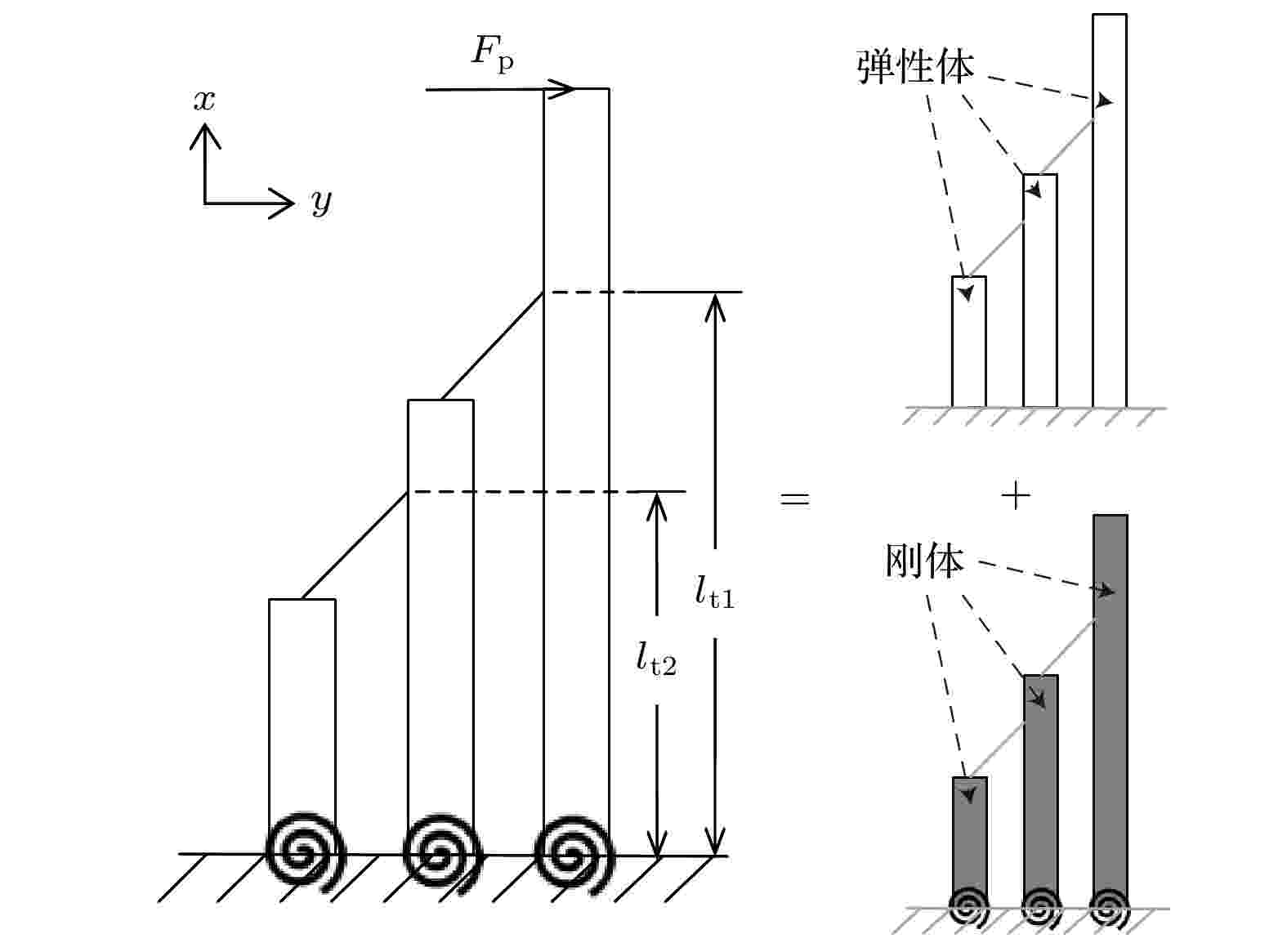
EDITOR'S SUGGESTION
2022, 71 (4): 048705.
doi: 10.7498/aps.71.20211105
Abstract +
Explanation of cochlear active acoustic amplification mechanism has been an unsolved medical problem. This mechanism is closely related to the motion of the stereocilia at the top of the outer hair cells in the cochlea. The motion of stereocilia is regulated by the tip-link tension and the fluid force of the lymph fluid. Therefore, studying the tip-link tension during the motion of stereocilia is an important part of the explanation of the cochlea's active sensory sound amplification mechanism. Most of previous studies regarded the stereocilia as rigid bodies, and ignored the influence of shaft bending when studying the mechanical properties of hair bundle. Most of the researches on elastic stereocilia used the finite element simulation, or simplified the model by ignoring the fluid-solid coupling with lymph fluid, or considered only static loading. Based on the Poiseuille flow combined with the distributed parameter model, the analytical solution of the elastic motion of stereocilia is derived in this work. The dynamic response of the stereocilia under the shear force of the tectorial membrane and the change law of tip-link tension are studied. The shaft bending produces a nonlinear accumulation of displacement at the height of the stereocilia. The higher the stereocilia, the more obvious the accumulation effect is. Under the action of dynamic load, the shaft bending contributes most to the displacement response in the tall stereocilium, and this contribution is easily affected by frequency change. Under low frequency load, the displacement response of tall stereocilium comes mainly from the root deflection. At high frequency, the shaft bending increases significantly, and the displacement response is produced by the combination of shaft bending and root deflection. The change of F-actin content in the cochlea exposed to noise would affect the stereocilia stiffness. In this paper, it is found that the decrease of stereociliary Young's modulus will increase the peak value of normalized tension and reduce its peak frequency, and the amplitude of normalized tension will increase under the low frequency shear load. Since the tip-link is connected to an ion channel, the change of normalized tension will affect the probability of ion channels opening, change the ability of cochlea to perceive the sound of corresponding frequency, and then affect the frequency selectivity of hair bundle. Therefore, previous studies of stereocilia regarded as rigid bodies underestimated the response of the cochlea to low-frequency acoustic signals. This model accurately describes the law of tip-link tension and provides a corresponding theoretical explanation for hearing impairment caused by noise environment. Previous experiments have shown that the lymphatic viscous resistance has little effect on the deflection of stereocilia. In this paper, when the viscous resistance is ignored, the tip-link tension changes very little, and when the pressure between the stereocilia is ignored, the tip-link tension changes significantly and the resonance peak of $ {f_2} $ disappears. Therefore, lymphatic fluid regulates the resonance properties of the tip-link tension by creating the pressure between the stereocilia. The presence of lymphatics is essential for generating the frequency characteristics of the hair bundle. In the low frequency domain, the motion of stereocilia is regulated mainly by tip-link, and in the high frequency domain, it is regulated mainly by lymphatic pressure.
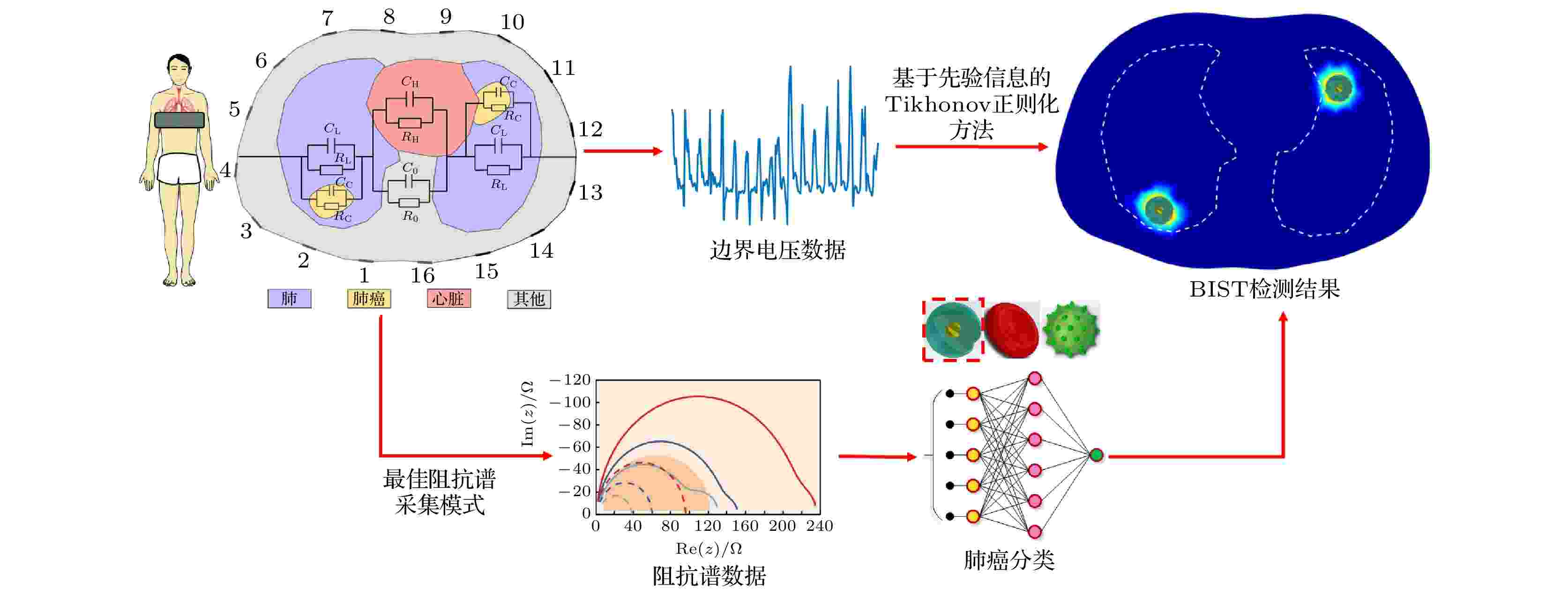
2022, 71 (4): 048706.
doi: 10.7498/aps.71.20211600
Abstract +
A bioimpedance spectroscopic imaging method for detecting the biological tissue based on electrical impedance tomography (EIT) and bioimpedance spectroscopy (BIS) is proposed. This method visualizes the target area and accurately recognizes the target type, which can be used for detecting the early lung cancer, assist clinicians in accurately detecting the early lung cancer, and improving the cure rate of early lung cancer. In this paper the bioimpedance spectroscopic imaging method is verified to be feasible and effective in detecting the early lung cancer through numerical simulation. The simulation results show that 1) the bioimpedance spectroscopic imaging method can realize the visualization of the early lung cancer area and accurately distinguish the type of early lung cancer, and 2) the optimal number of acquisitions of impedance spectroscopy is 4, and the best classifier is Linear-SVM, and the average classification accuracy of 5-fold cross-validation can reach 99.9%. In order to verify the simulation results, three biological tissues with different electrical characteristics are selected to simulate cancerous regions used for detection. The experimental results show that the method can visualize the biological tissue area and distinguish the type of biological tissue. This method can integrate the advantages of electrical impedance imaging and bioimpedance spectroscopy, and is very promising way of detecting early lung cancer.
GEOPHYSICS, ASTRONOMY, AND ASTROPHYSICS

EDITOR'S SUGGESTION
2022, 71 (4): 049101.
doi: 10.7498/aps.71.20211686
Abstract +
Absolute gravity measurement refers to the measurement of the absolute value of gravitational acceleration (g, approximately 9.8 m/s2). The precision of absolute gravity measurement is limited mainly by vibration noises. Vibration correction is a simple and feasible way to deal with vibration noises, which corrects the measurement results by detecting vibration noises with a sensor. At present, the vibration correction performance of different sensors lacks systematic analysis and evaluation. In this paper, the theoretical analysis of how the sensor characteristics affect the correction performance is carried out. The vibration correction performances of three sensors, two different seismometers and one accelerometer, are evaluated experimentally in the three cases with different vibration noises. The experimental results show that the correction precision obtained by using low-noise seismometer is limited mainly by its bandwidth and range. In case I i.e. the quiet environment, the standard deviation of corrected results obtained by using both seismometers can reach tens of μGal (1 μGal = 10–8 m/s2), which is close to that obtained by using an ultra-low-frequency vibration isolator. However, in case II i.e. the noisy environment, the standard deviation of corrected results obtained by both seismometers increase to hundreds of μGal due to the enhancement of high-frequency vibration components. This means that the correction performances of both seismometers deteriorate, and the performance of seismometer with narrower bandwidth turns even worse. Moreover, two seismometers cannot even work in case III with stronger vibration noises due to the range limitation. On the other hand, the correction precision obtained by using accelerometer is affected mainly by its resolution which is on the order of mGal (1mGal = 10–5 m/s2). Its bandwidth can reach hundreds of or even thousands of hertz and its range is generally over ±2 g, which is large enough to meet the needs for noisy and dynamic applications. In case I, the standard deviation after correction with accelerometer is larger than that before correction. This is because the intensity of vibration noises in this case is close to or even smaller than the self-noise of accelerometer so that it could not be detected effectively by accelerometer. In case II, the resolution of accelerometer is sufficient to detect the vibration noises effectively. The standard deviation of the results is reduced from 2822 μGal to 1374 μGal after correction with accelerometer, and equal to a precision of 0.1 mGal after 100 drops. In case III where the amplitude of vibration noise rises to 0.1 m/s2 and seismometer cannot work, the accelerometer could still achieve a precision of 0.3 mGal after 100 drops. The systematic deviation is corrected from –1158 mGal to –285 μGal and the standard deviation is reduced from 34 mGal to 3.3 mGal. Therefore, the low-noise seismometer is more suitable for vibration correction in a quiet environment with stable foundation, which could realize a standard deviation superior to hundreds of μGal, while the accelerometer is more appropriate for vibration correction in a complex or dynamic environment, which could achieve a standard deviation of mGal-level. Finally, the present results and analysis provide a theoretical guidance for selecting and designing the sensors in vibration correction applications.
























